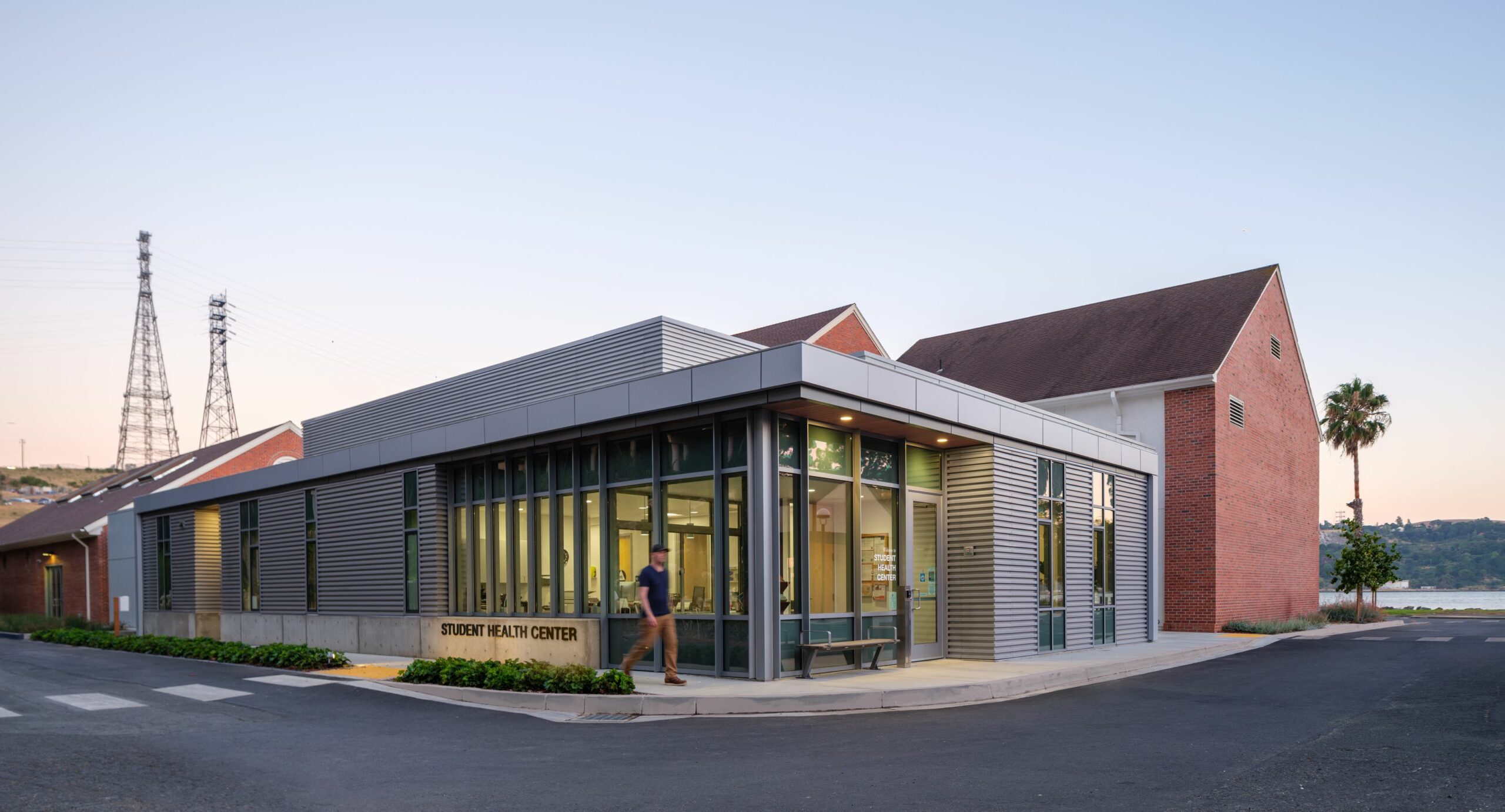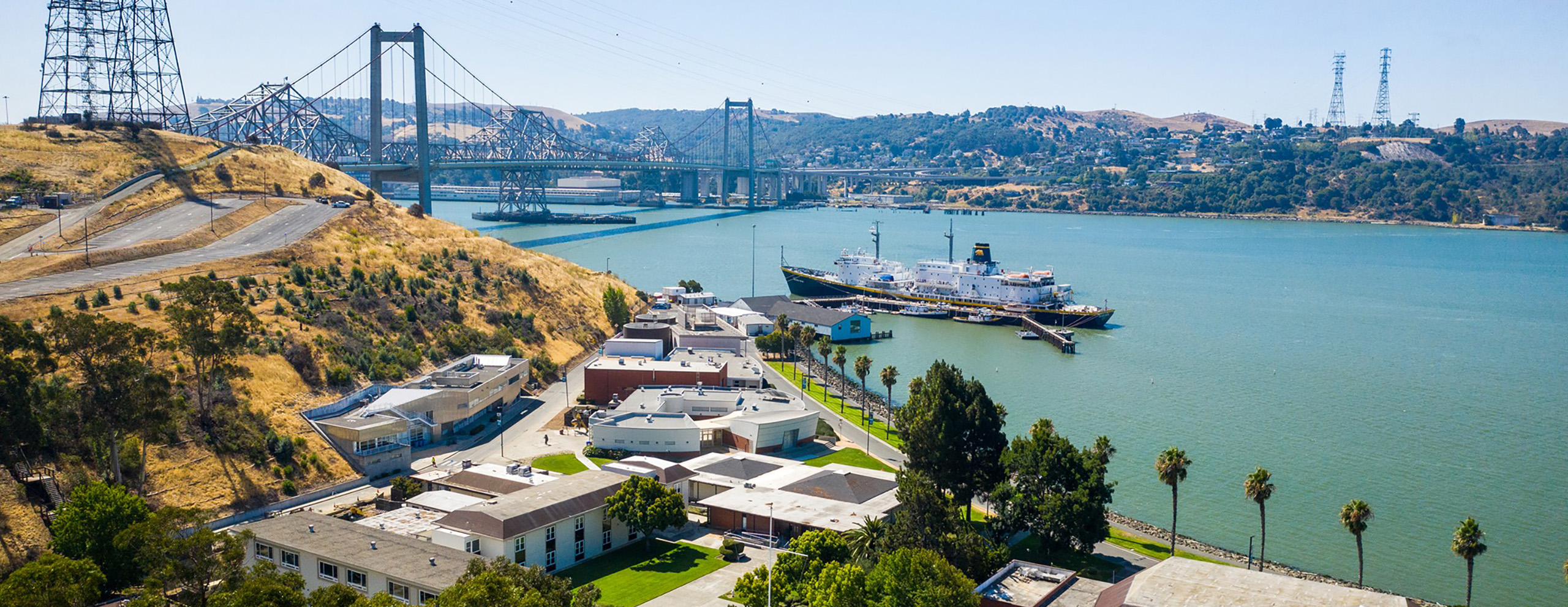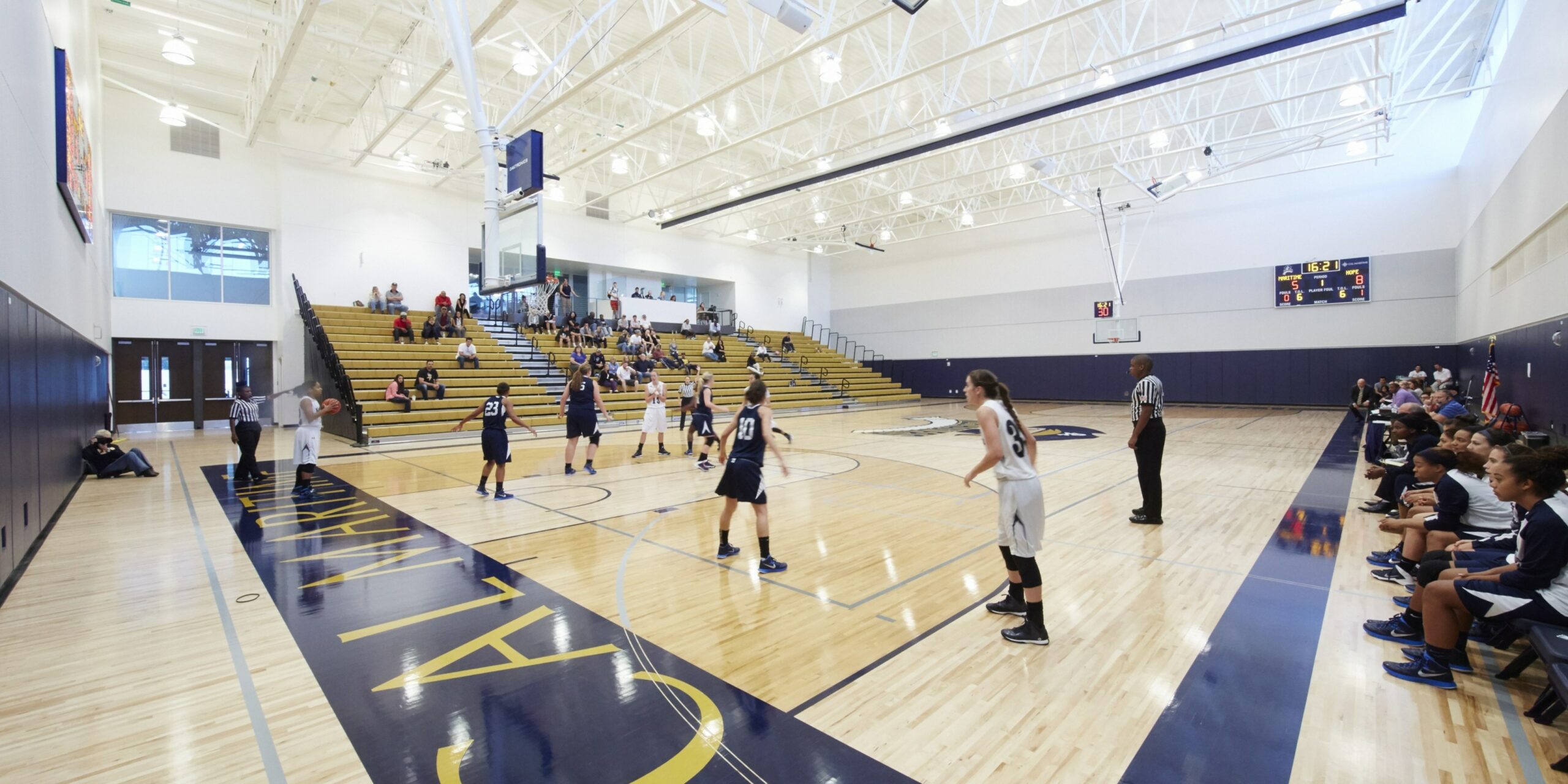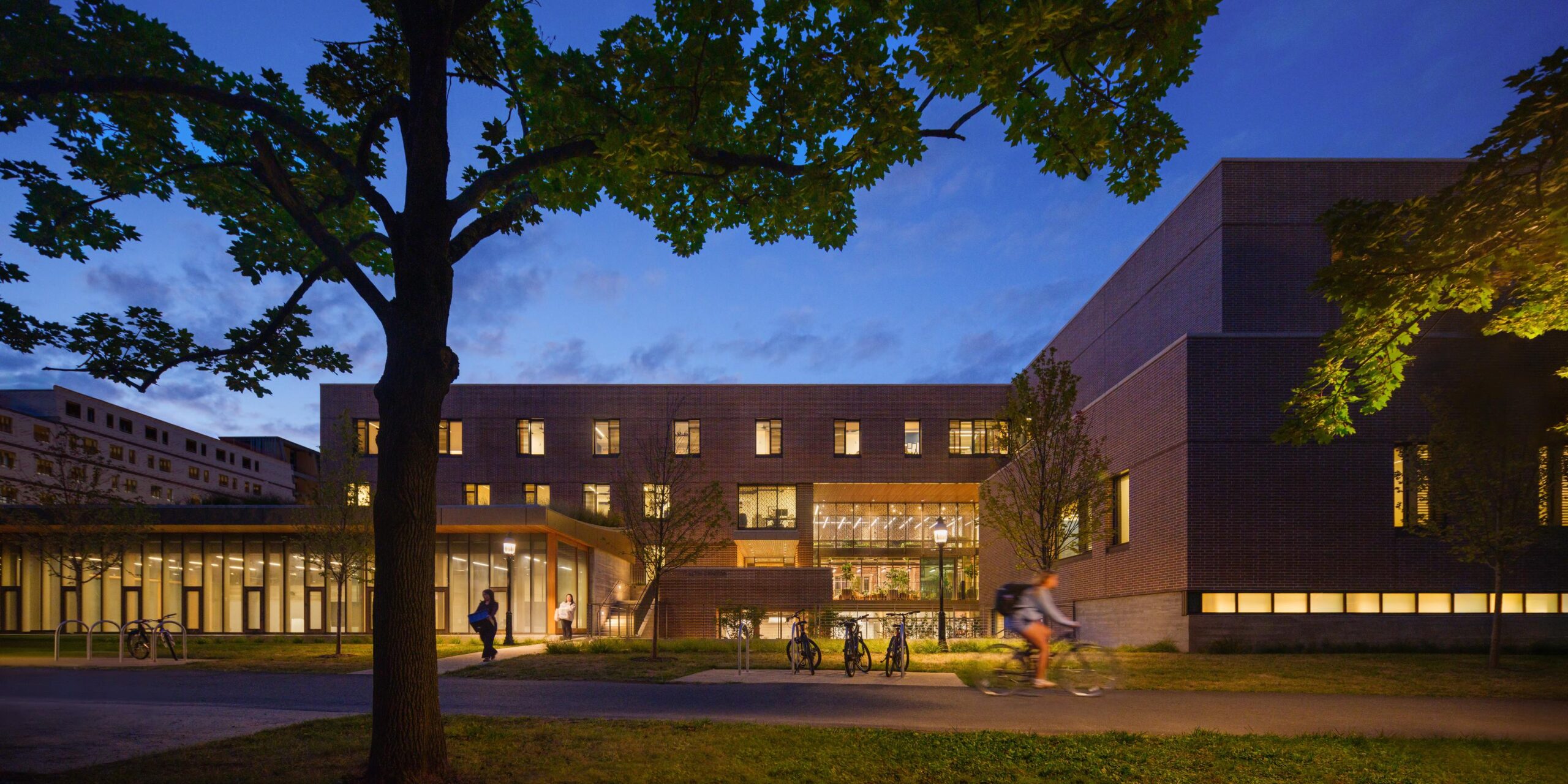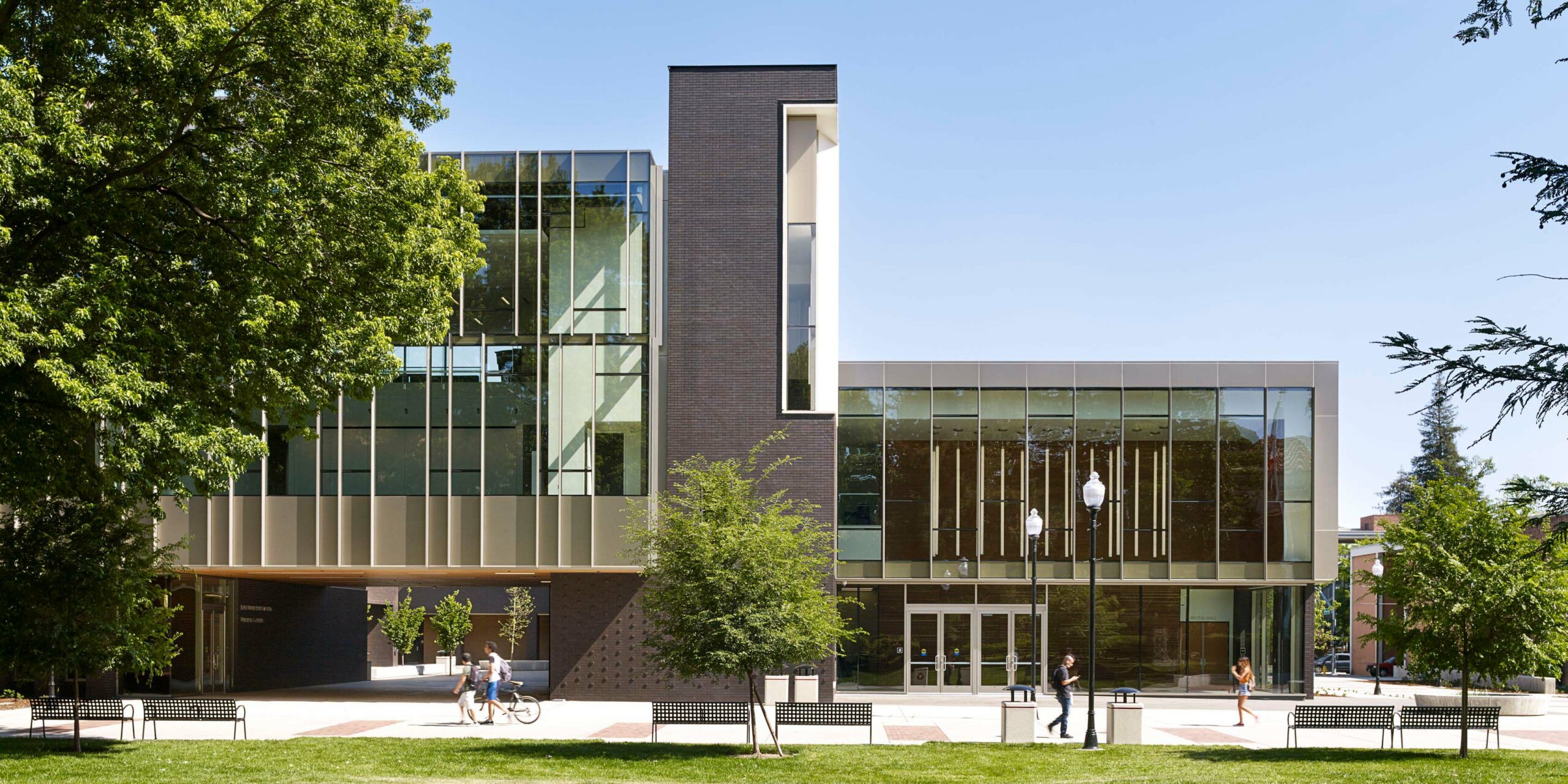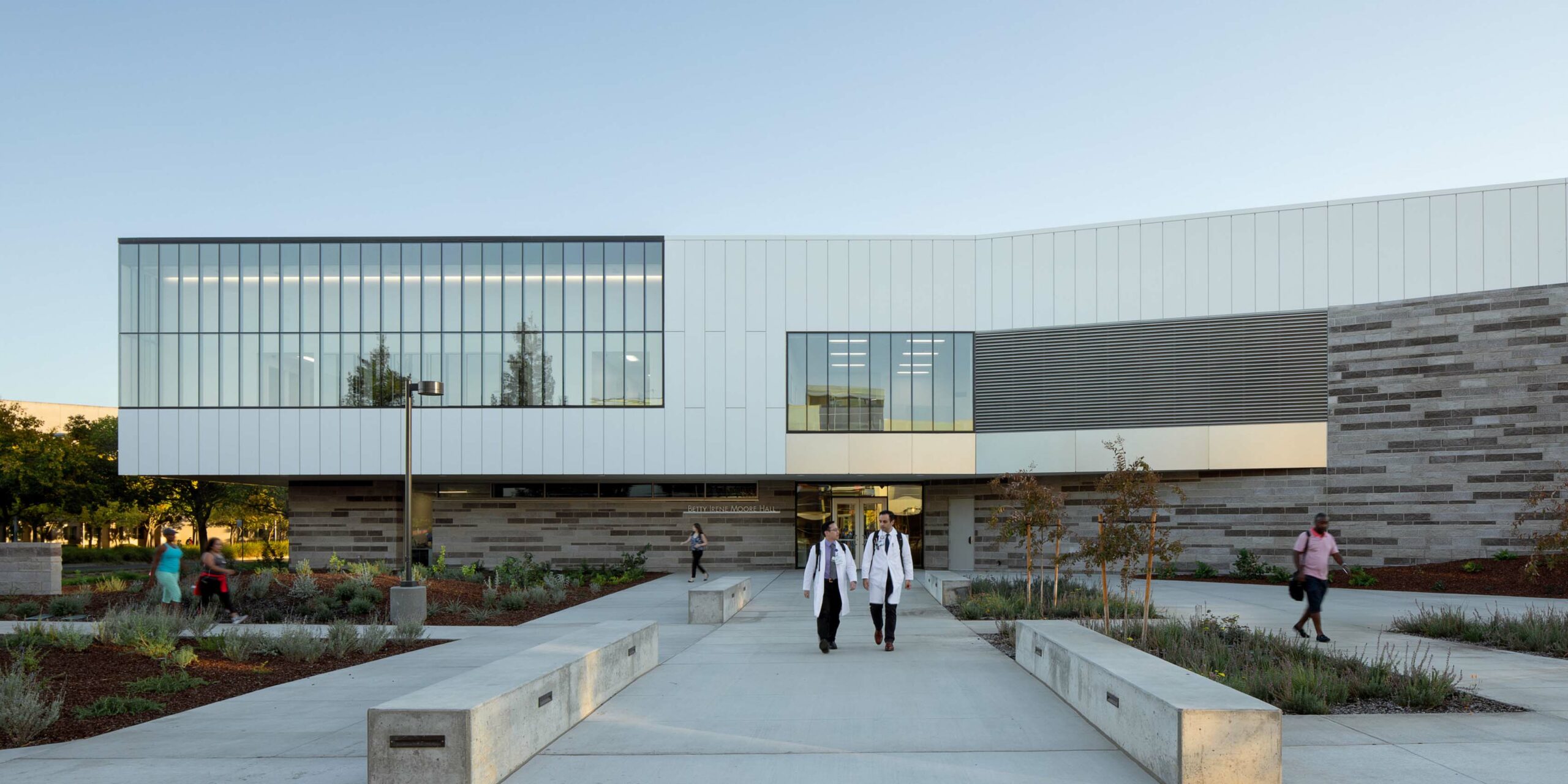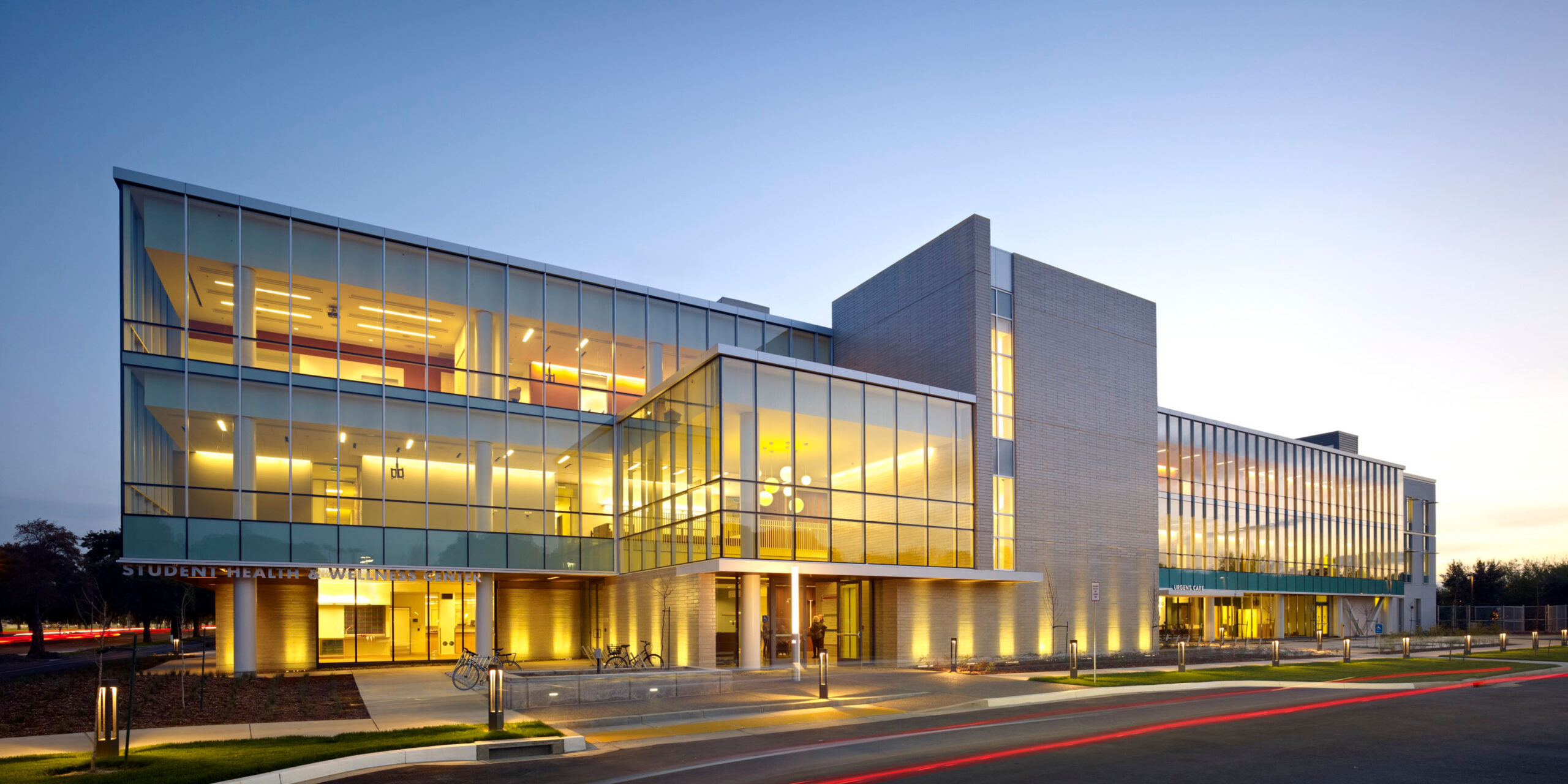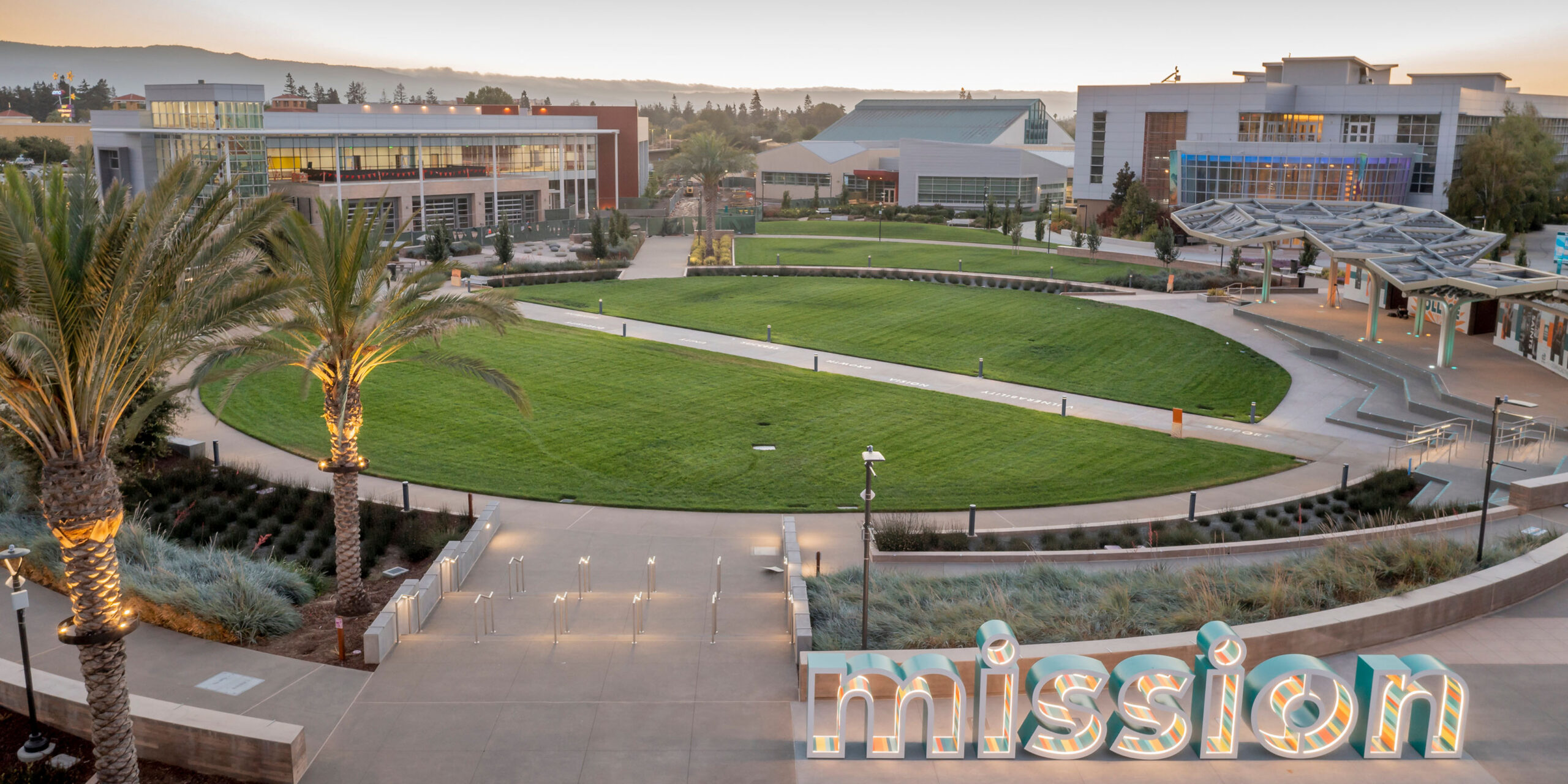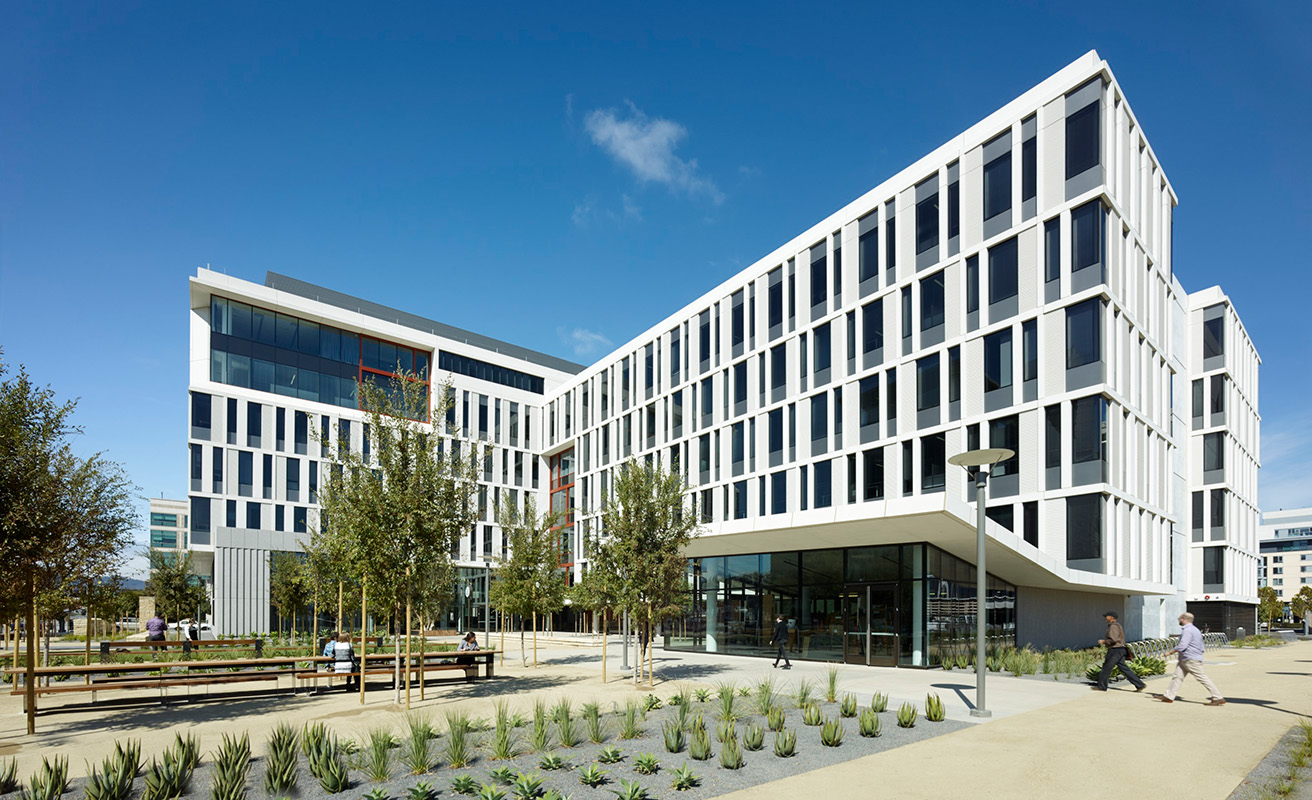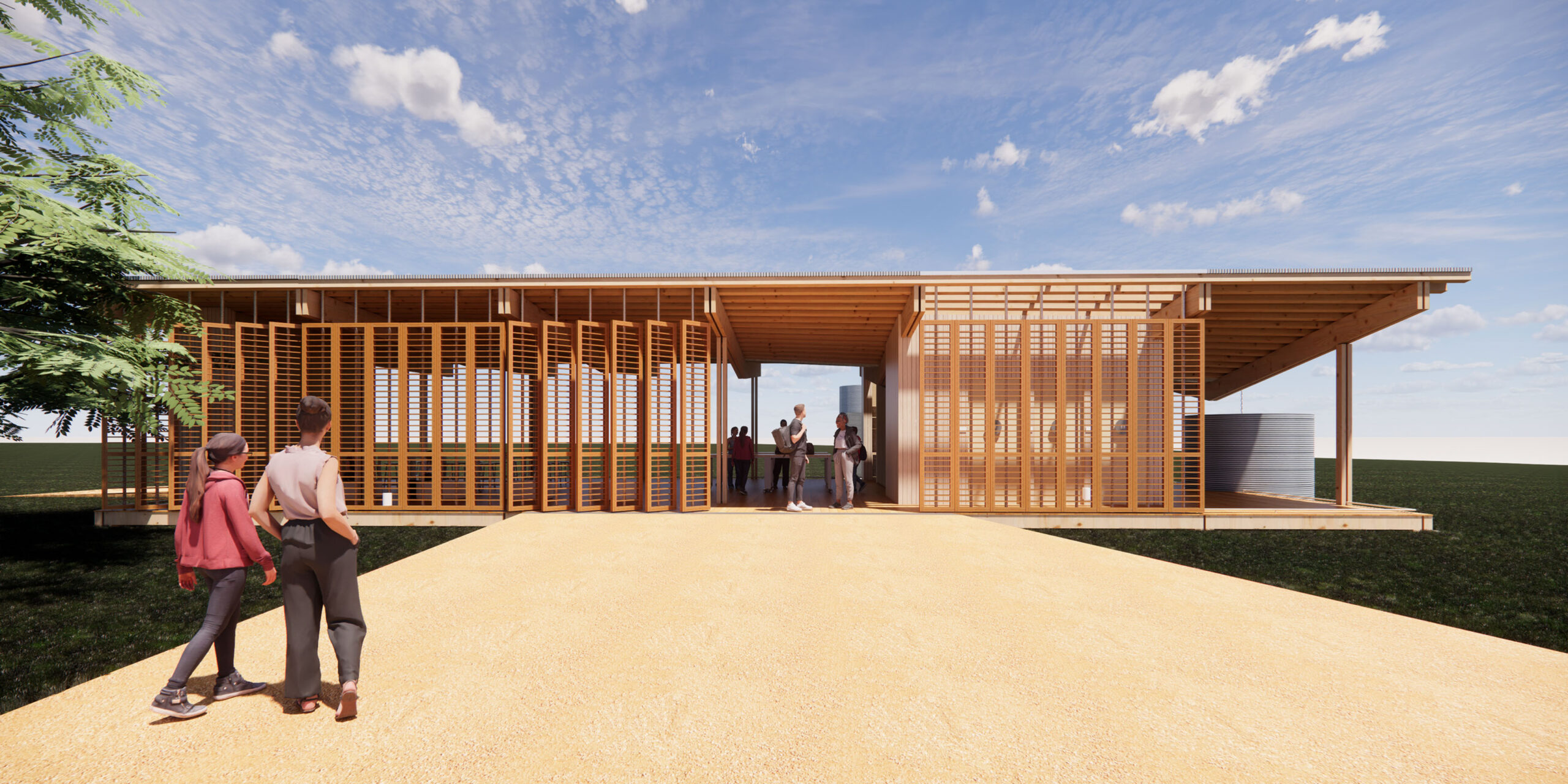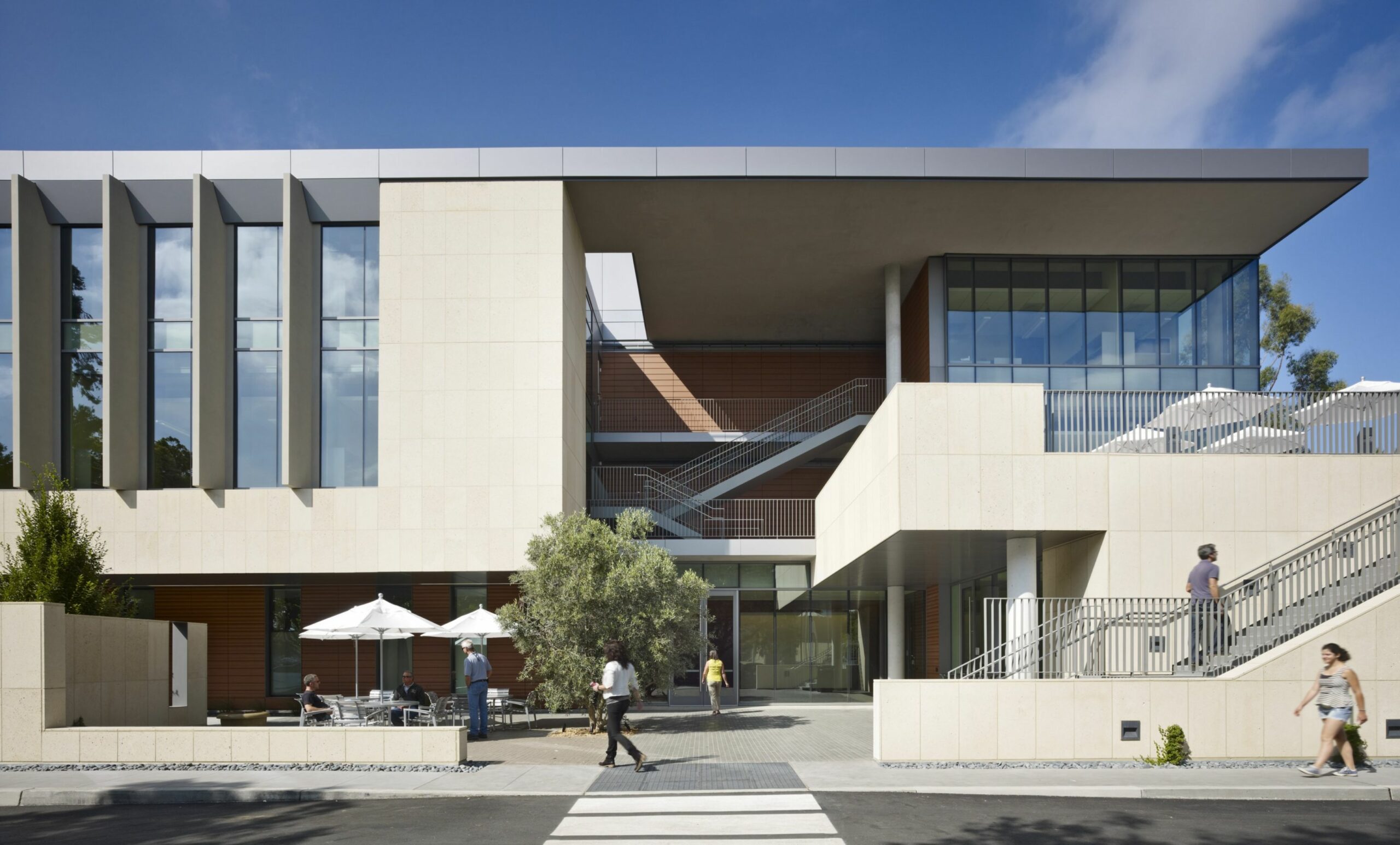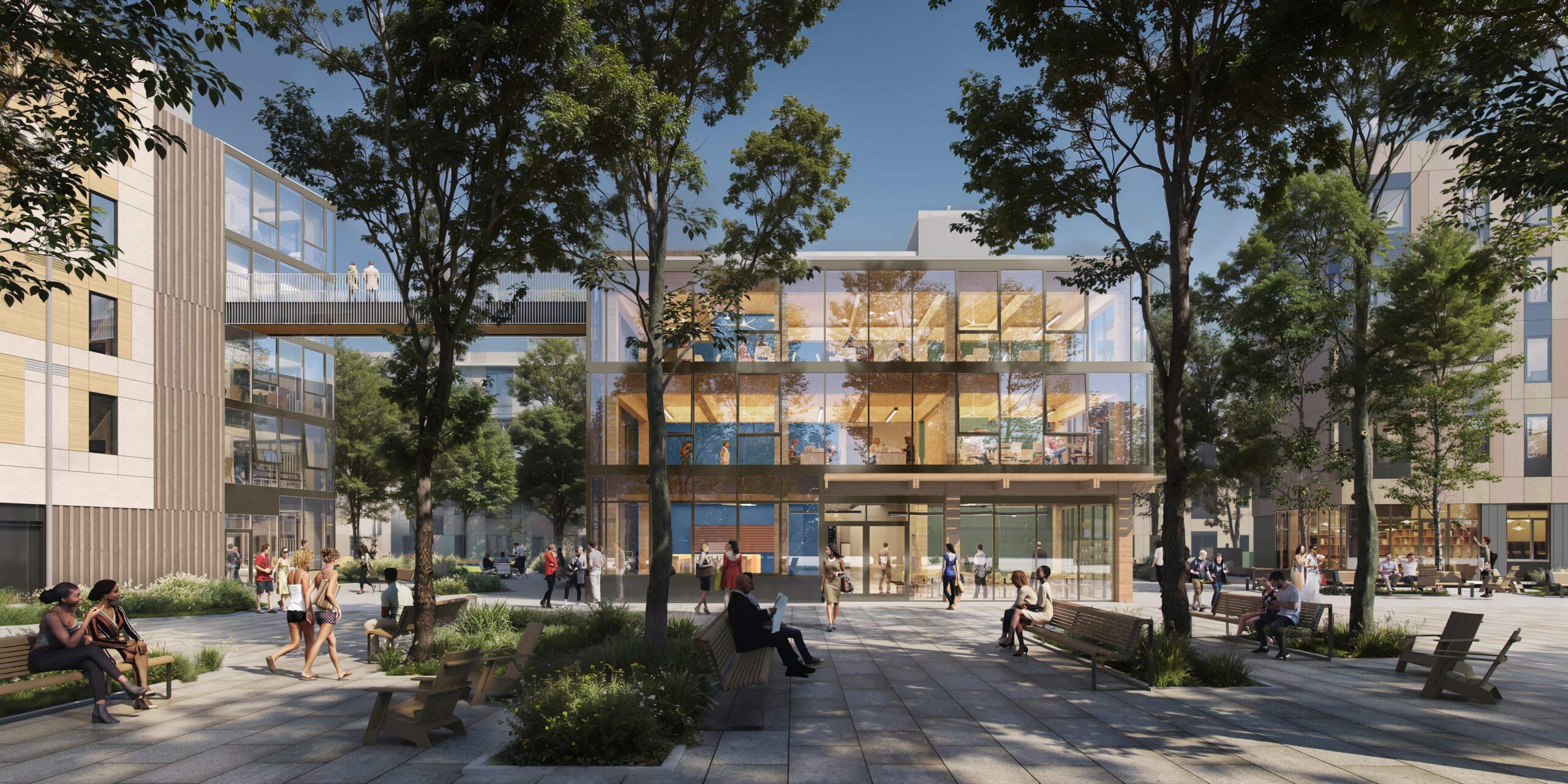Mayo Hall at Cal Maritime Adaptive reuse transforms old gym into center of student life
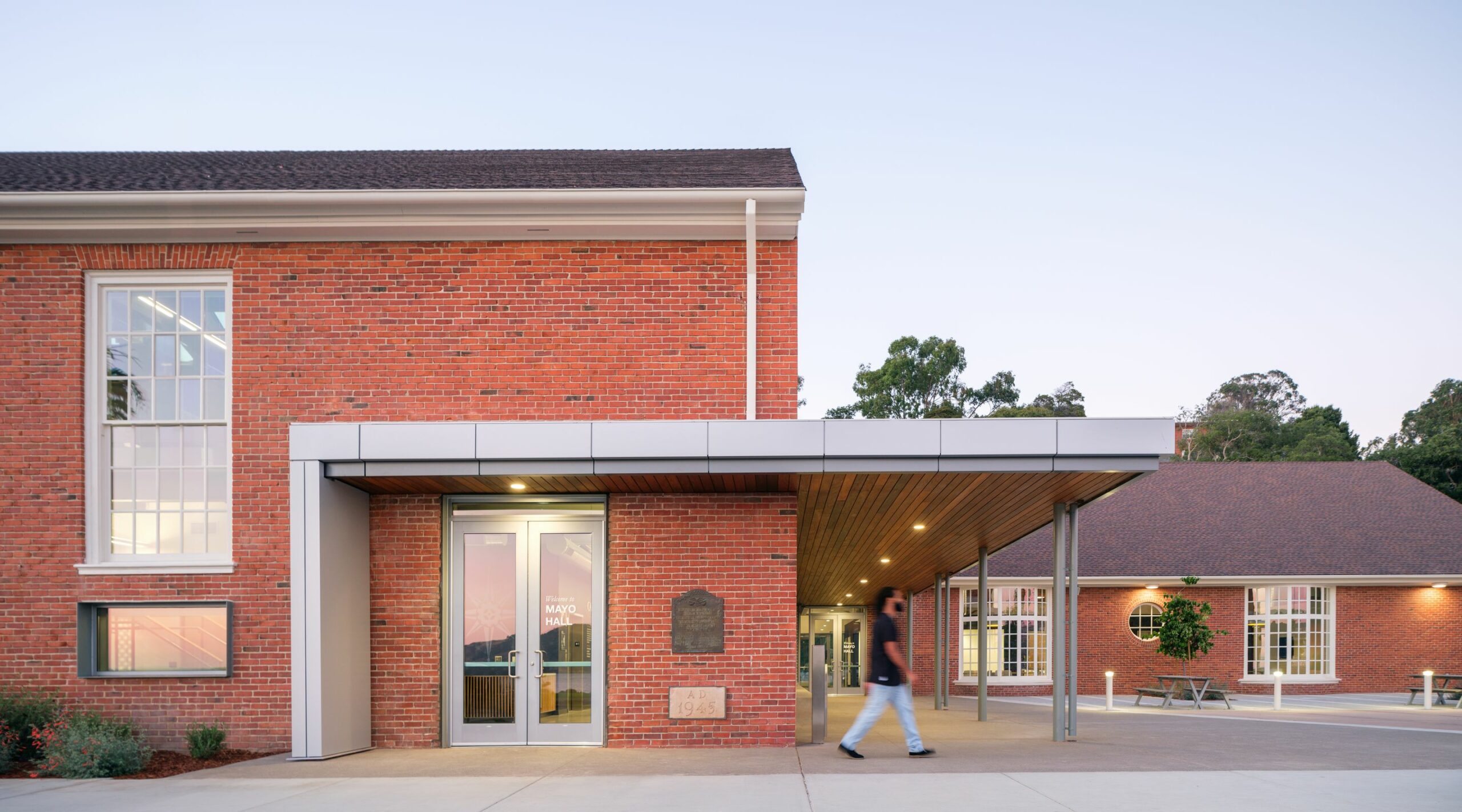
- Client California State University, Maritime Academy
- Location Vallejo, CA
- Size 24,000 sq ft
- Completion 2024
- Program Student Life (Student Union), Student Services Offices (Admissions, Registrar, Career Services) Student Triad Offices (Student Government), Bistro, Health Services (Non-OSHPD), Veterans Center
- Sustainability LEED Gold
- Delivery CM-at-Risk
-
Photographer
Jason O'Rear
Celso Rojas -
Awards
Design-Build Institute of America Western Pacific Region, Innovation Award (2024)
Associated General Contractors of California, Constructor of the Year Award (2024)
With eleven projects at Cal Maritime, WRNS Studio has played a key role in evolving this scenic waterfront campus, where cadets train for maritime careers. Mayo Hall, a 1945 tribute to fallen World War II cadets and one of the campus’s most beloved buildings, served as the athletics and recreation center for over fifty years. Today, the “Old Gym” has been reimagined—through an adaptive reuse and expansion—into a dynamic center of campus life, with a program encompassing student services, event space, and the health center.
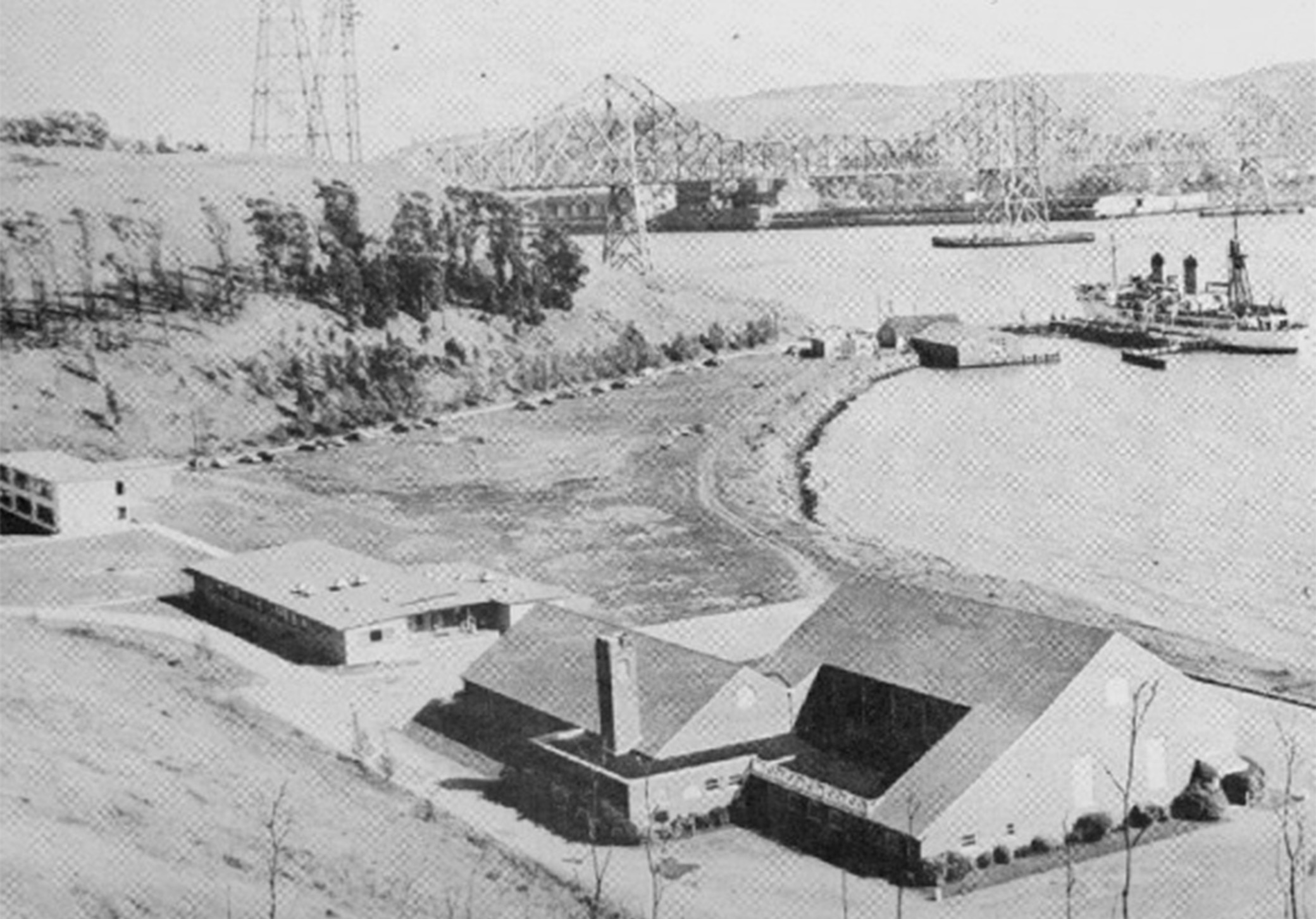
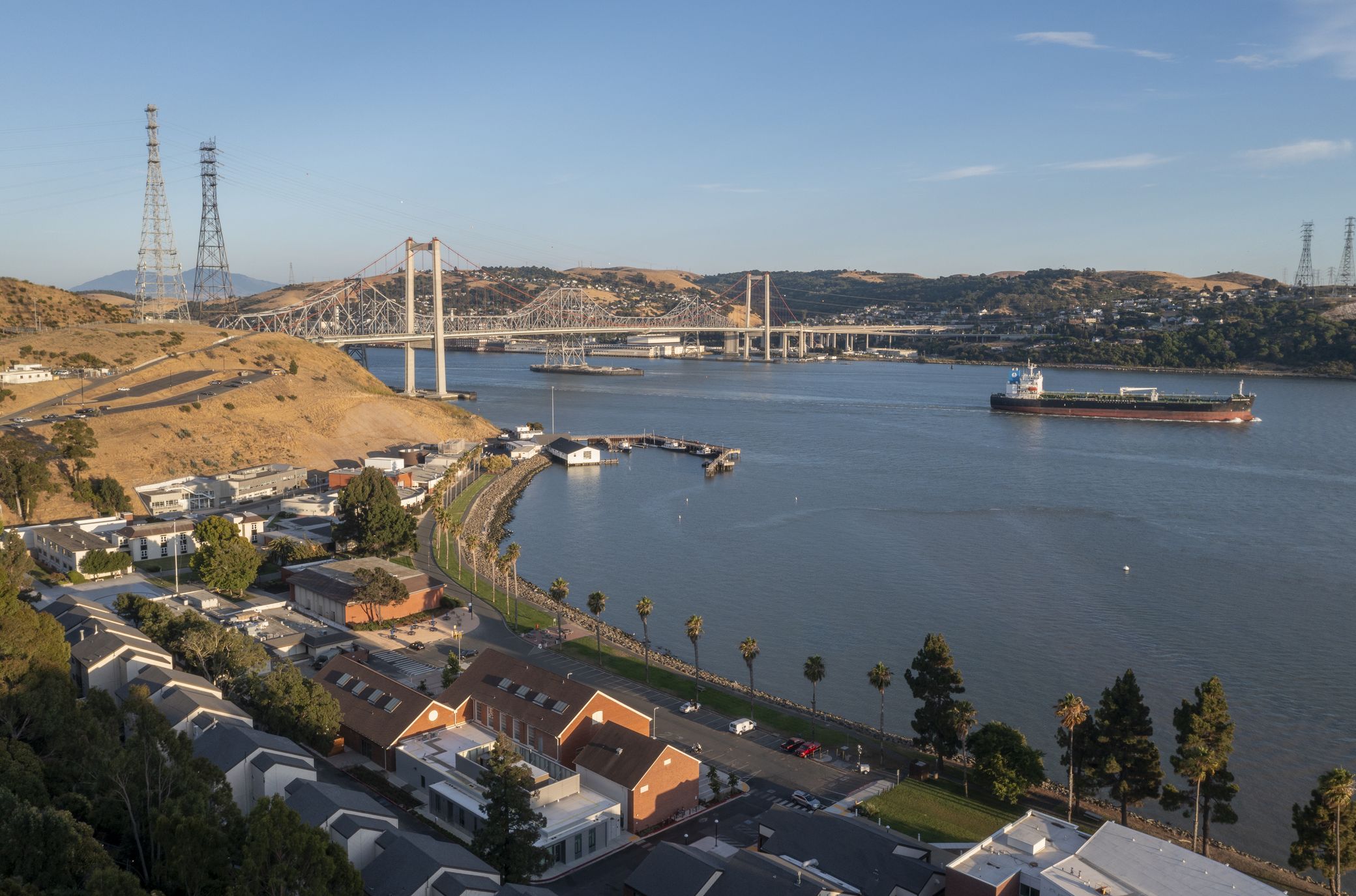
Catalyzing campus connections
As envisioned in the 2032 Campus Master Plan, also led by WRNS Studio, the renovation and expansion of Mayo Hall was carefully crafted to integrate seamlessly into the campus’s future development. Positioned along a planned thoroughfare linking the main quad with dining and student housing, Mayo Hall’s modern single-story extension, entry canopy, and landscaped plaza create a welcoming gateway while activating the thoroughfare with inviting outdoor gathering spaces.
The extension, clad in a combination of corrugated and smooth metal panels, complements the historic brick structure with subtle maritime references. Additionally, the design restores up to 40% of the site’s landscape, fostering coastal biodiversity and enhancing the campus’s natural environment.
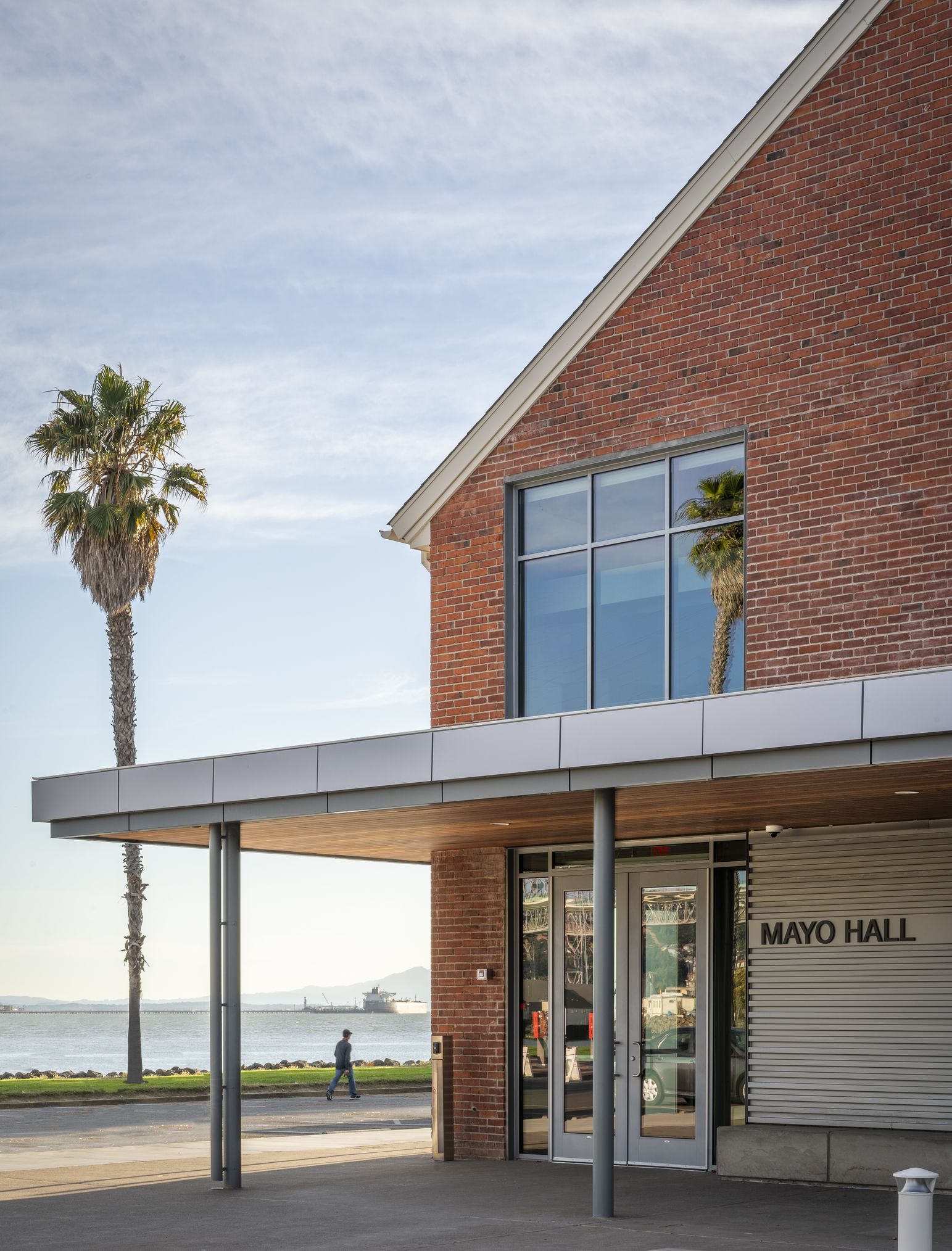
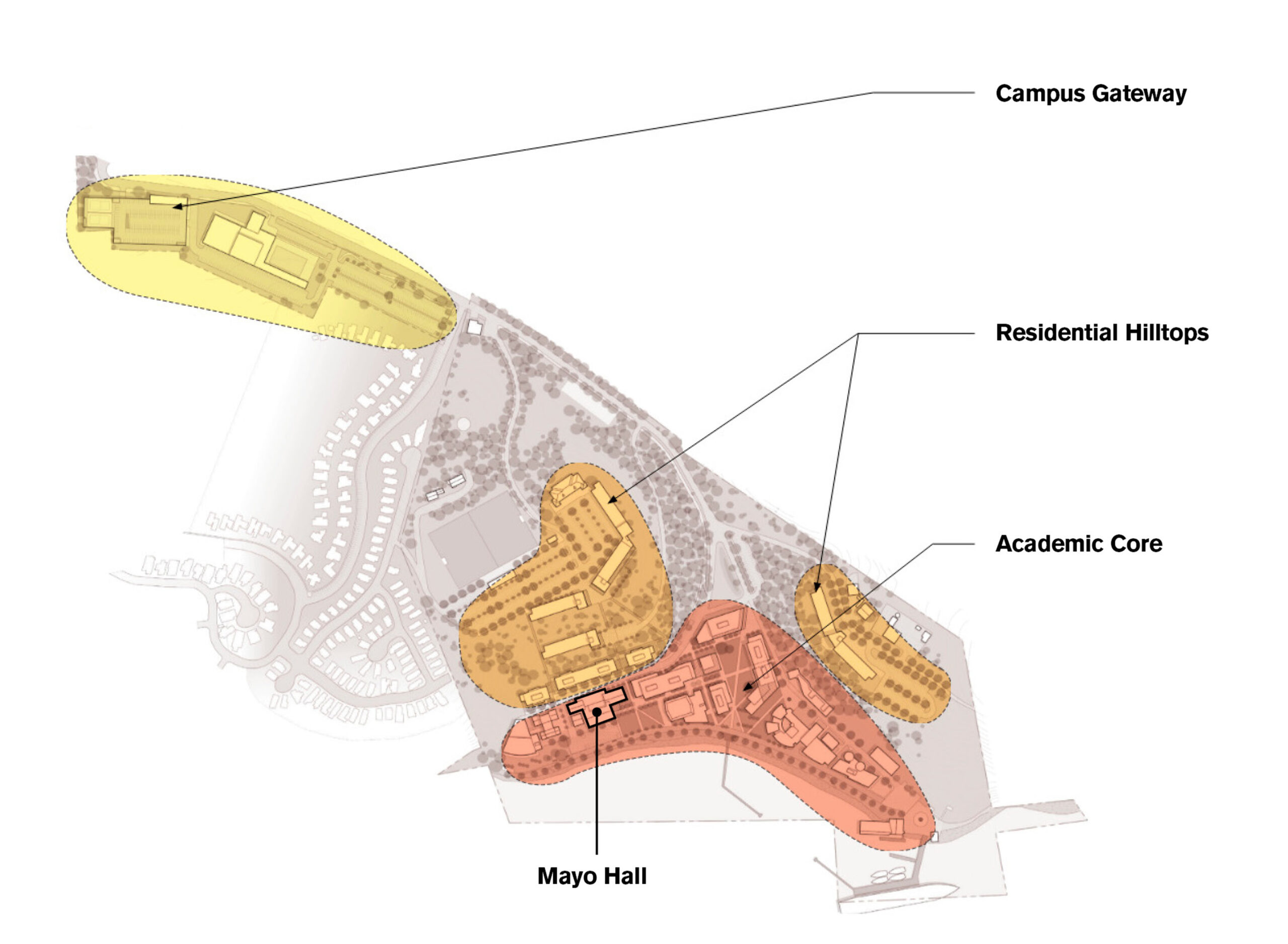
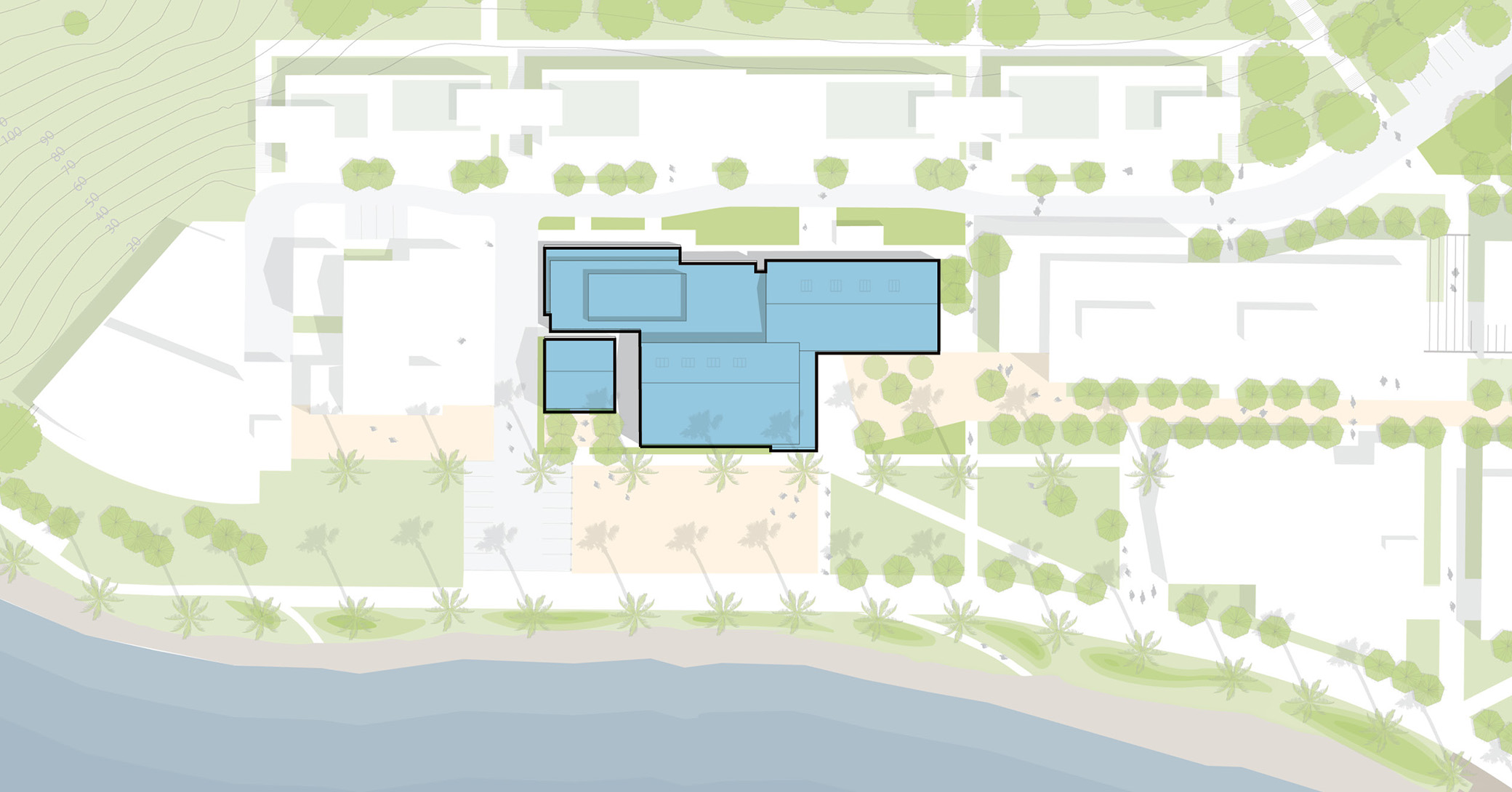
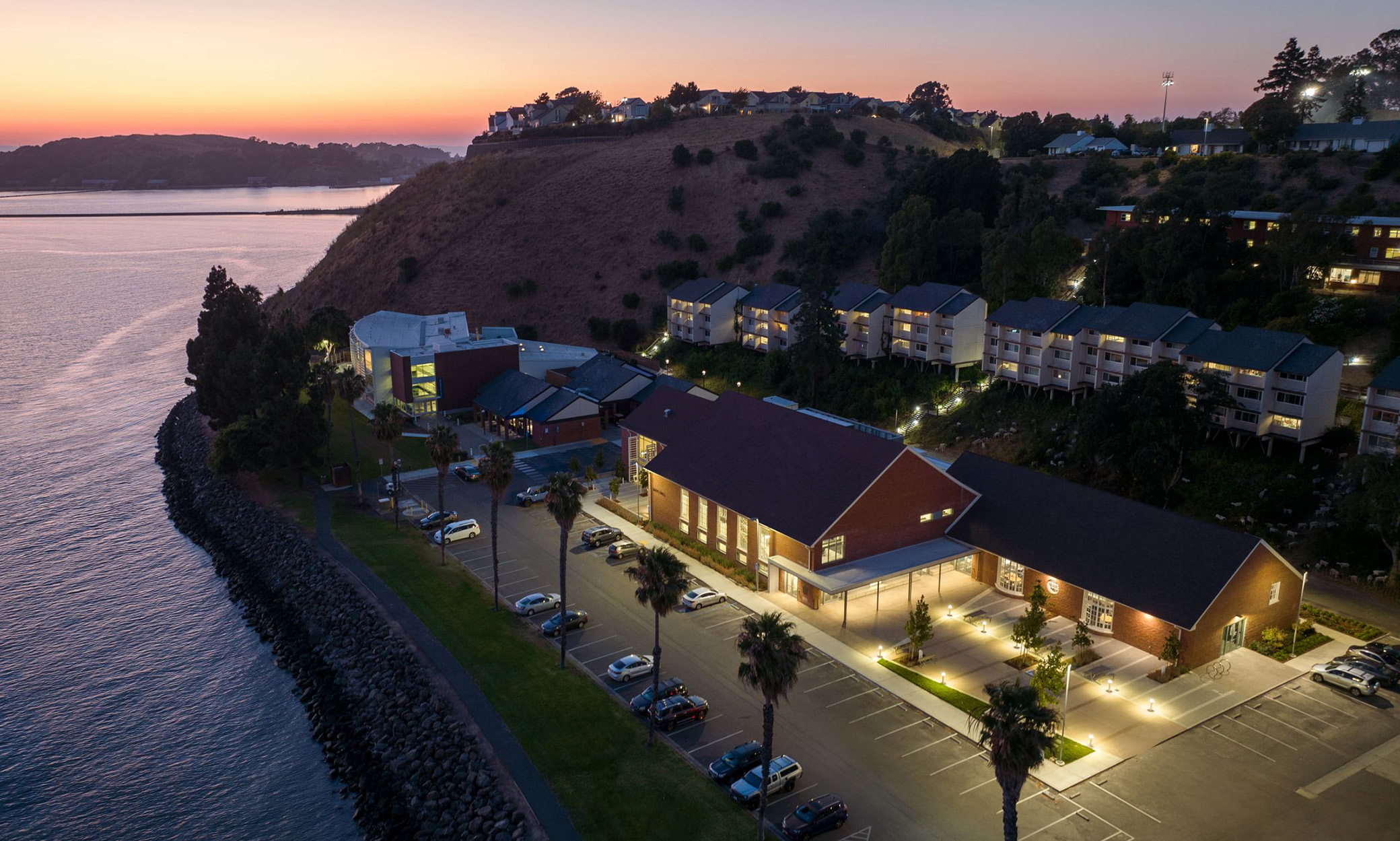
The concourse: heritage and heart
At the heart of Mayo Hall is a double-height concourse, supporting gathering, pre-function, and break-out activities while providing visual connections to the original gym’s historic structural shell. A time capsule discovered during construction, along with campus relics, is now displayed on a gallery wall in this space.
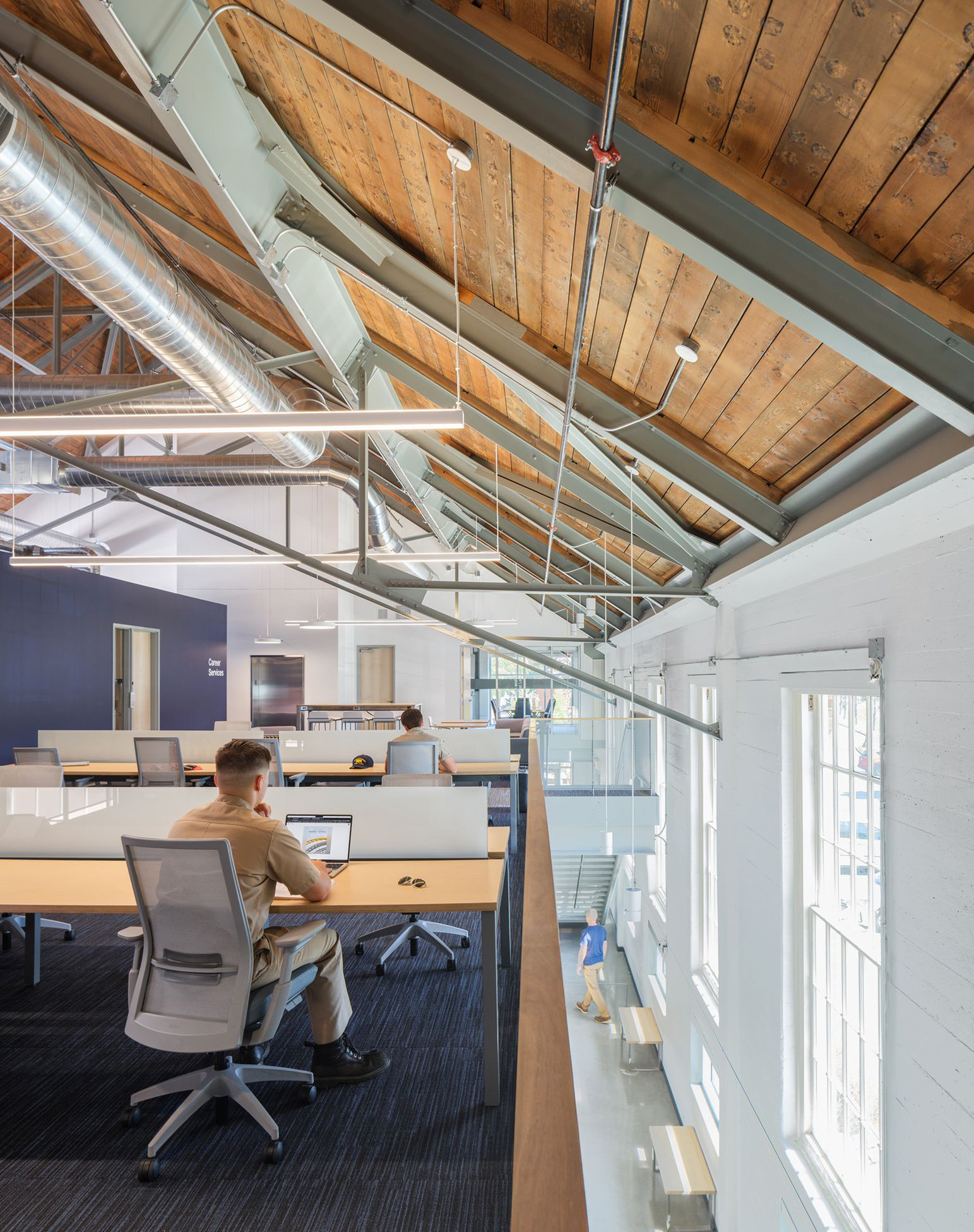

Multi-purpose rooms accommodate registration and administration, while the former natatorium has been reimagined as student life and bistro spaces.
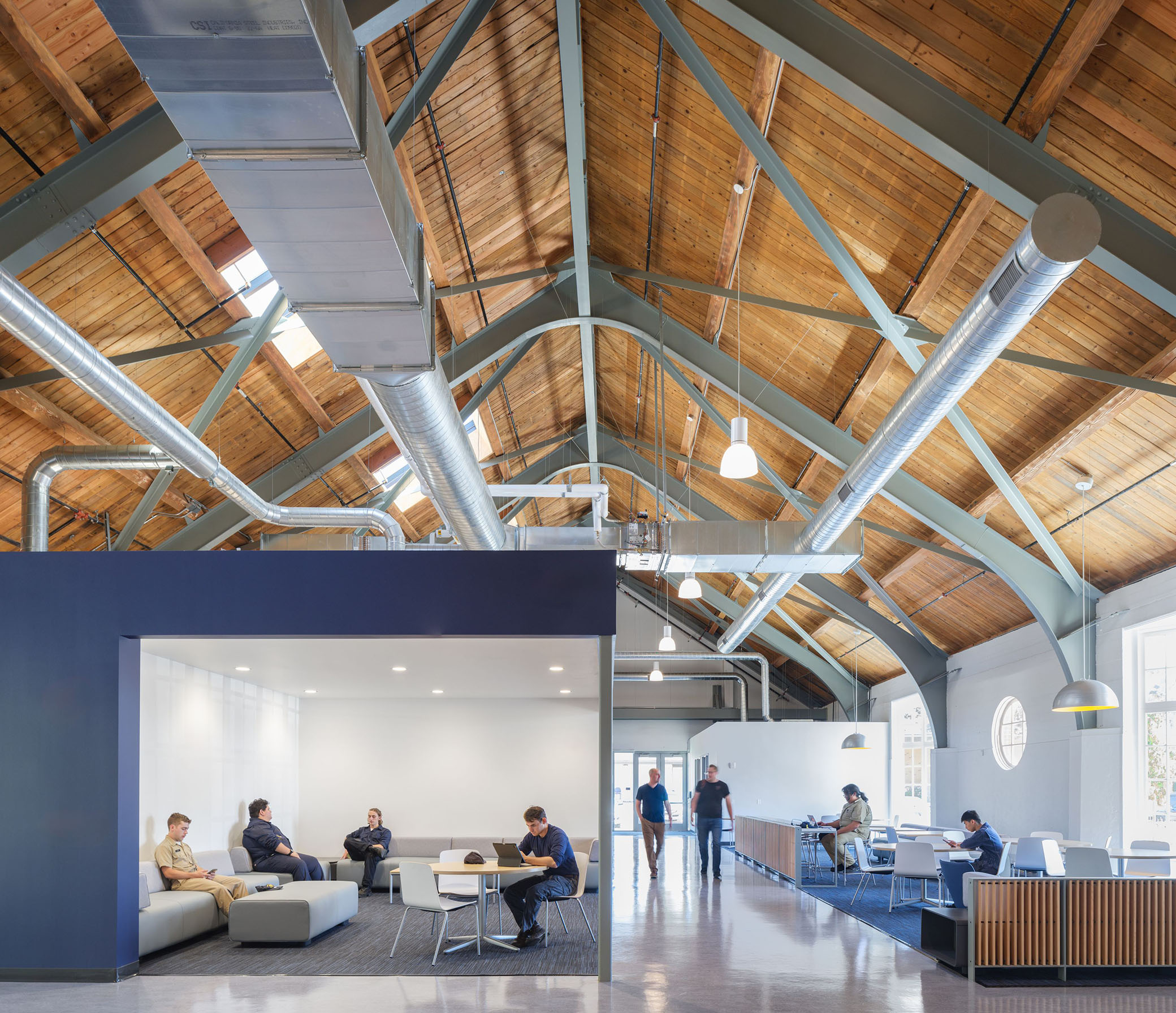
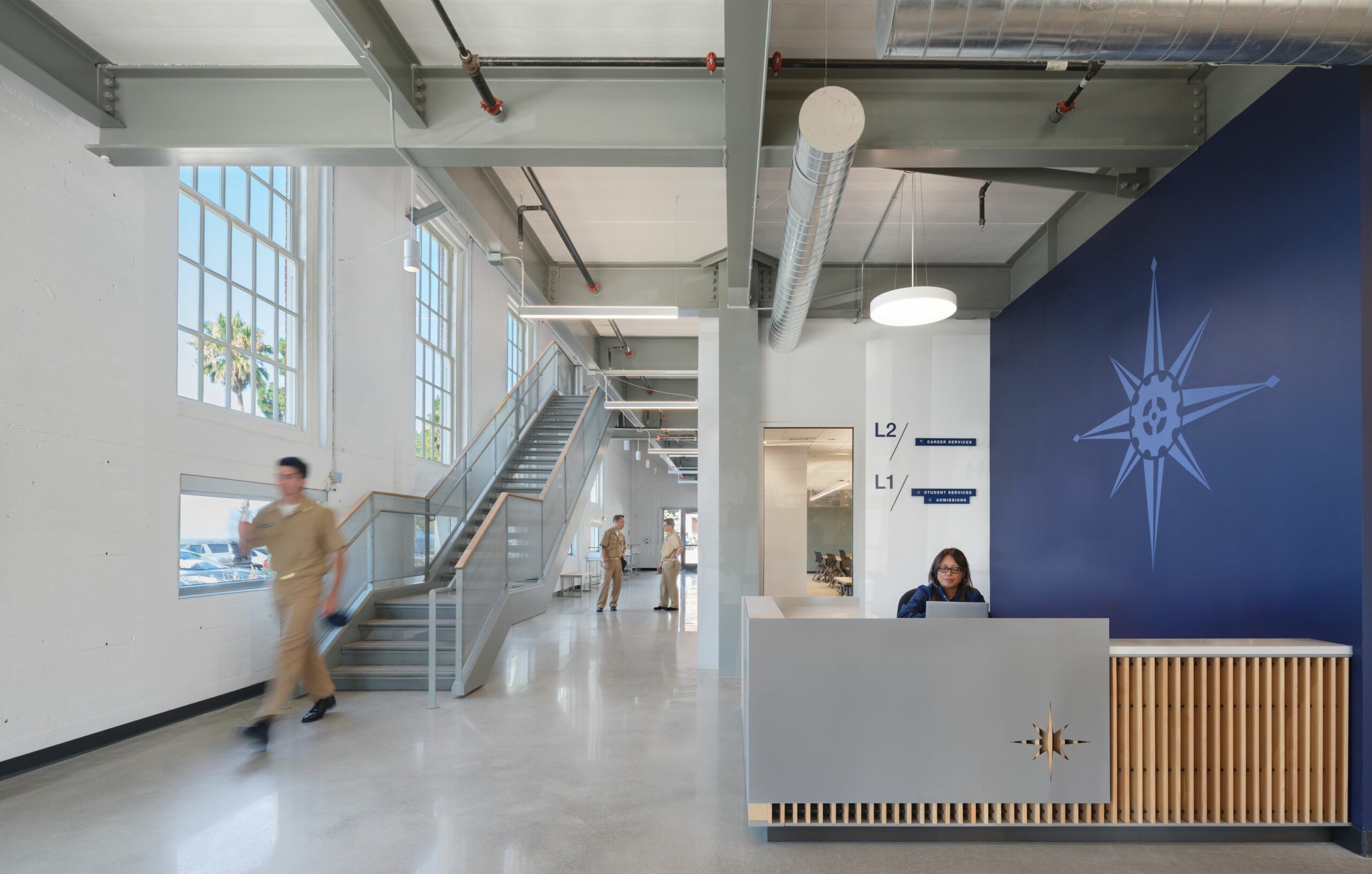
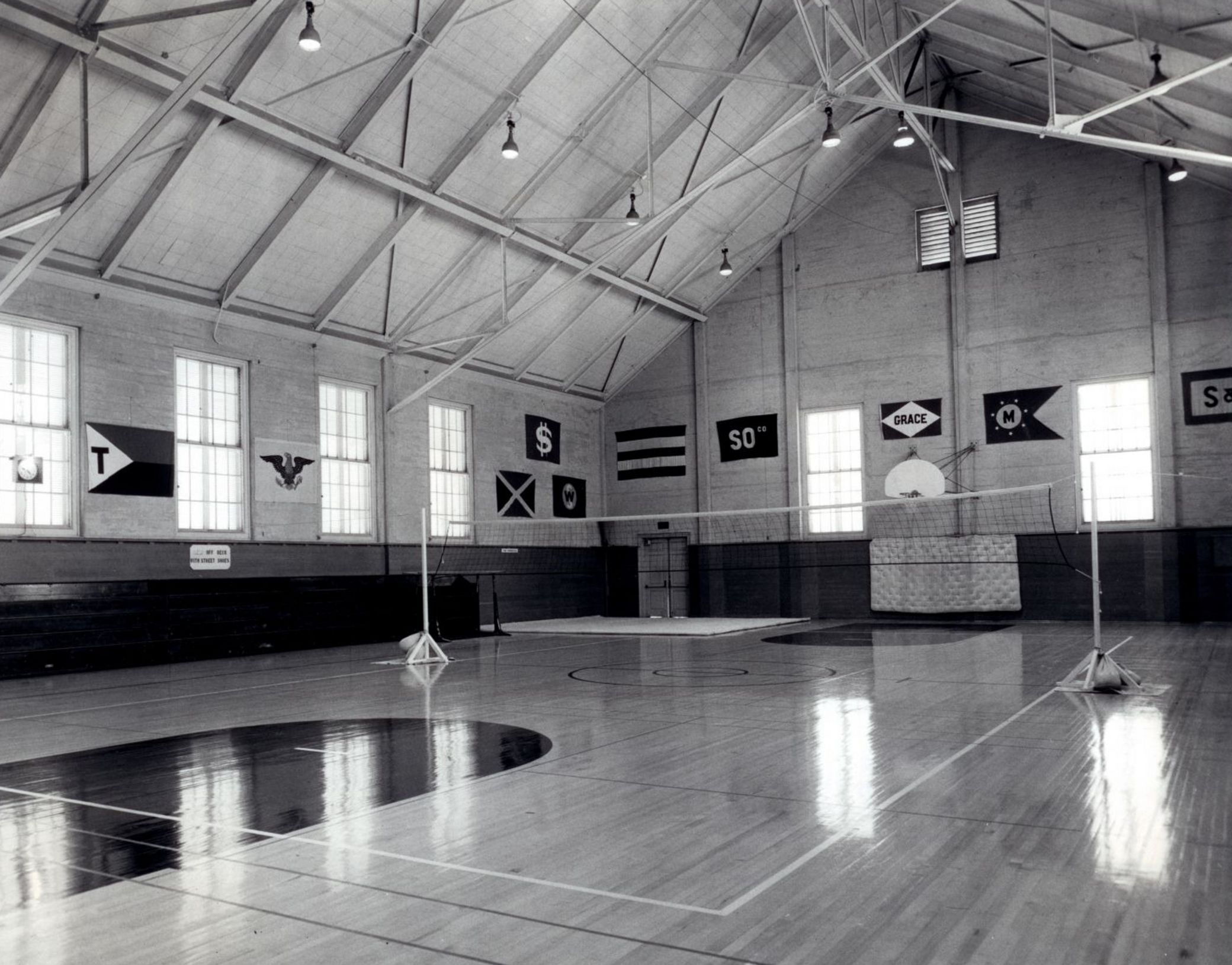
A mezzanine level within the gymnasium shell introduces a loft-style workspace for student leadership and career services, adding efficiency and square footage. Health Services occupies the new addition with its own discreet entrance.
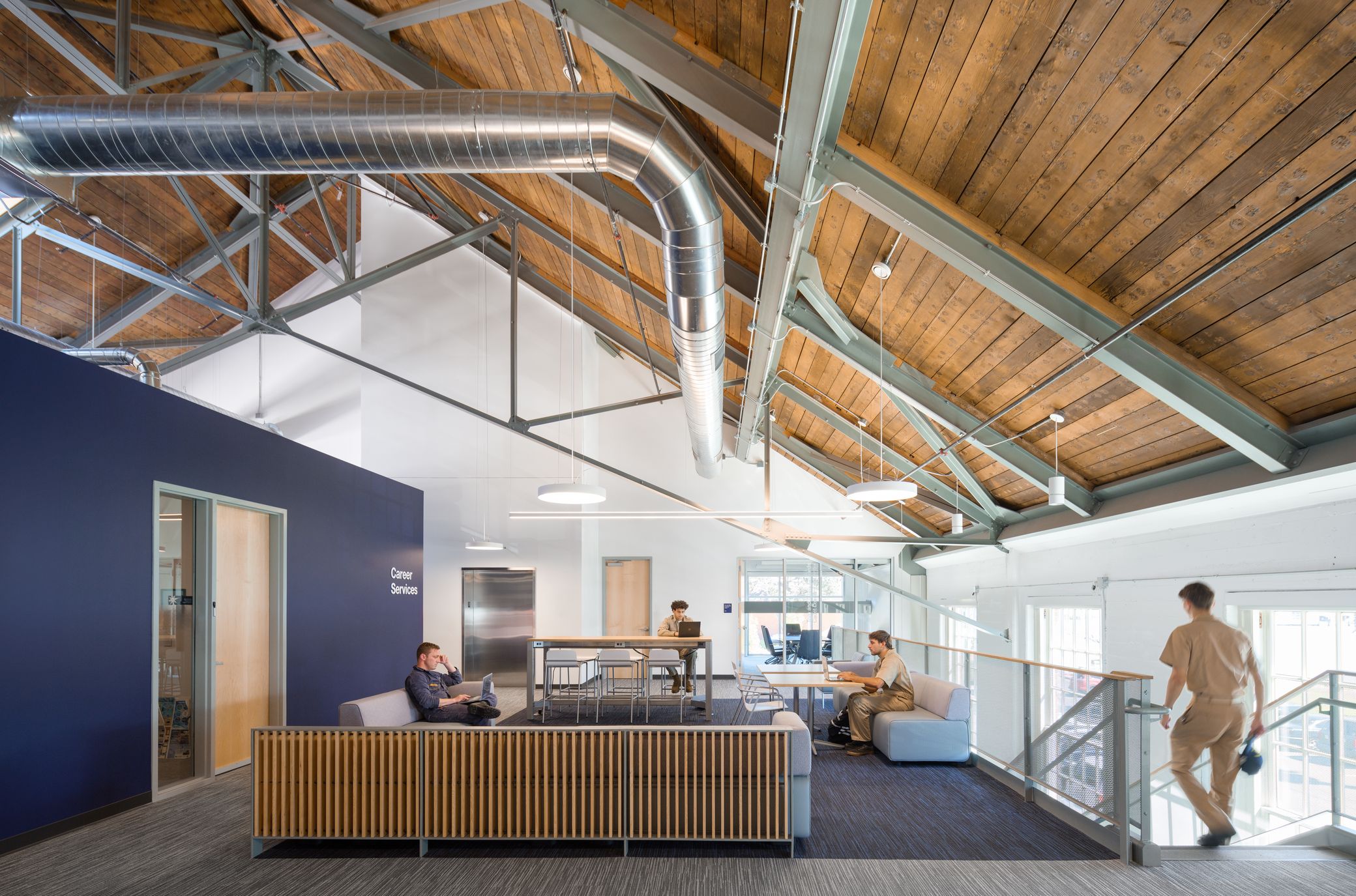
Preserving legacy, enhancing efficiency
The project required a highly calibrated approach to meet carbon and energy goals while complying with the requirements of the Secretary of Interior’s Standards for Historic Rehabilitation and the State Historic Preservation Office. The building’s Colonial Revival motifs—from window patterning and materiality to large-scale structural components–needed to remain intact, maintaining its original character.
Responding to the damp coastal setting, all new walls were designed with an insulated water-resistant membrane and the exterior hardware is stainless steel to hold up against the cycles of rain, mist, fog, and sun. A rebuilt roof features ridge vents, operable clerestory windows, and high-performance glazing to enhance natural ventilation, solar control, and reduce glare, contributing to an anticipated energy cost savings of 86.5%.
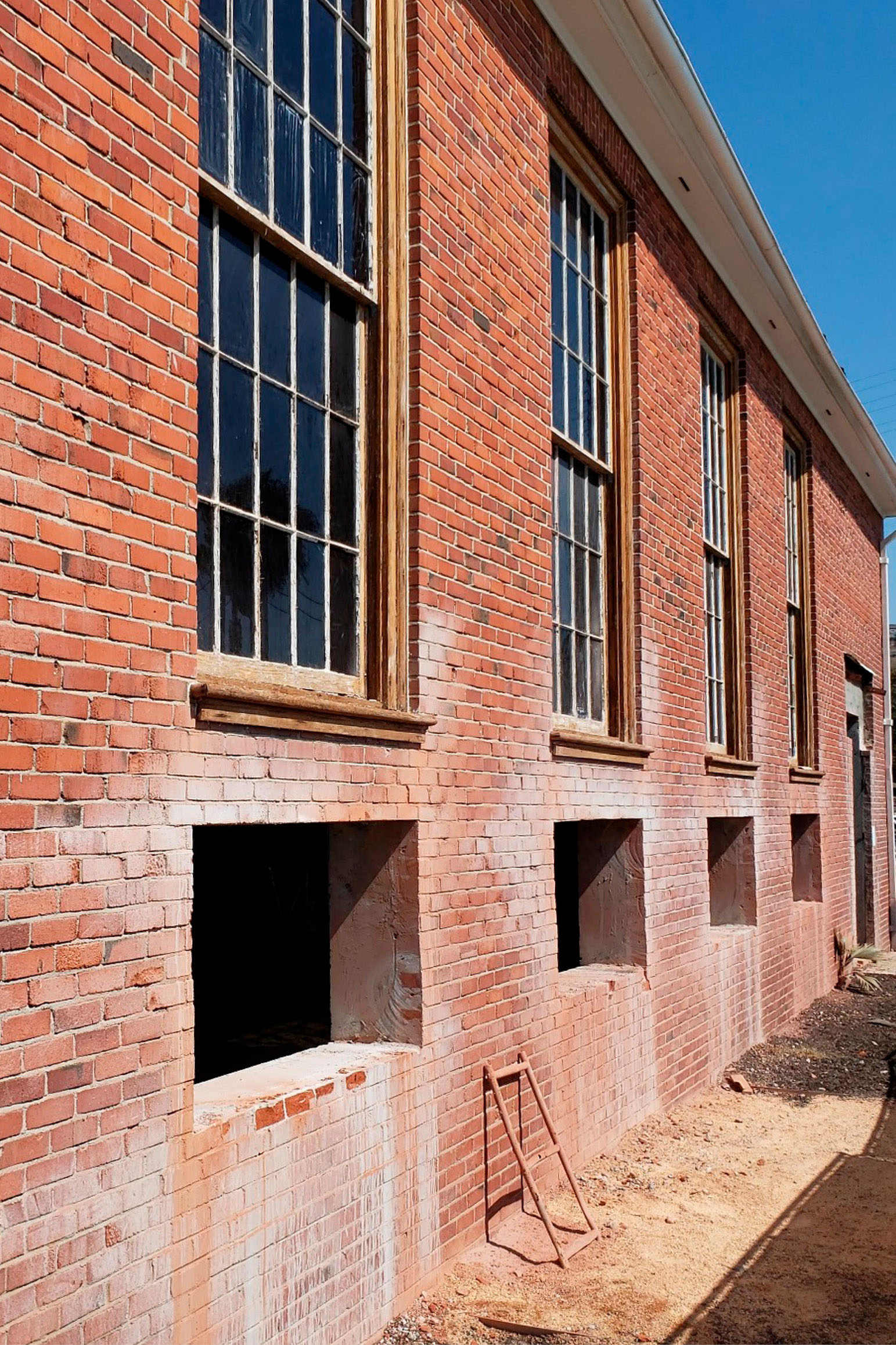
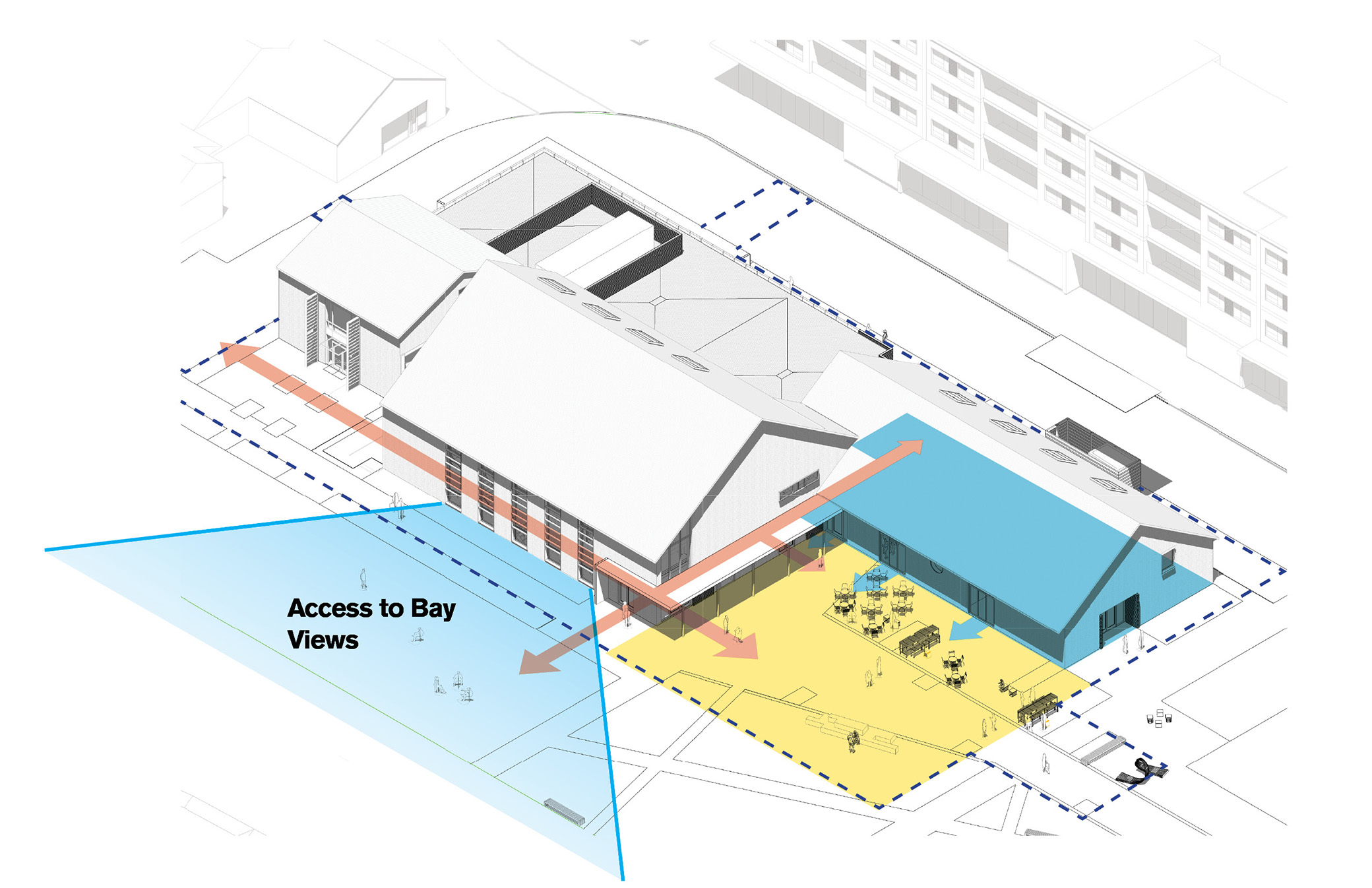
New windows installed below the sill height of the existing windows flood the concourse and conference rooms with natural light and offer views of the immediate harbor and greater bay.
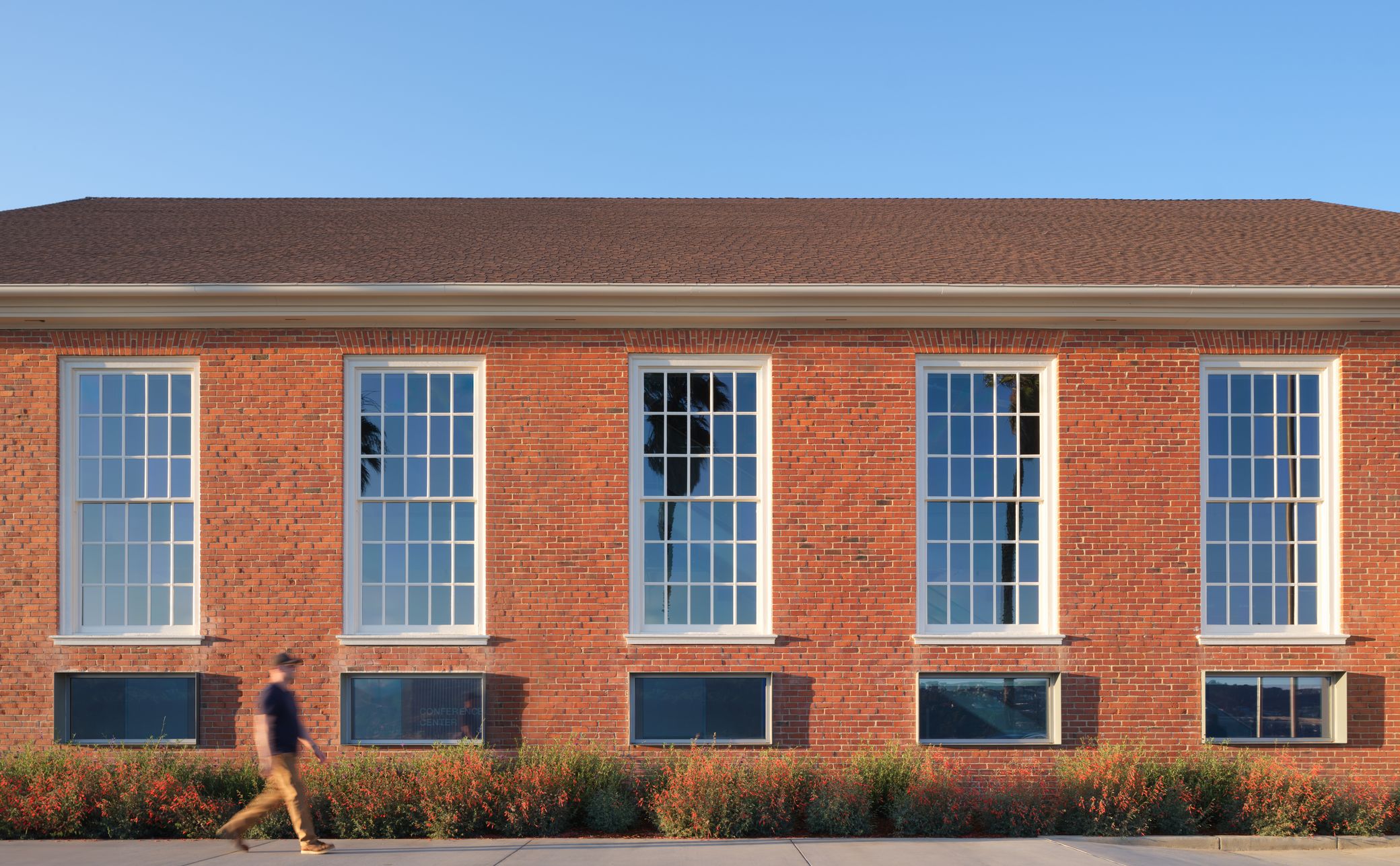
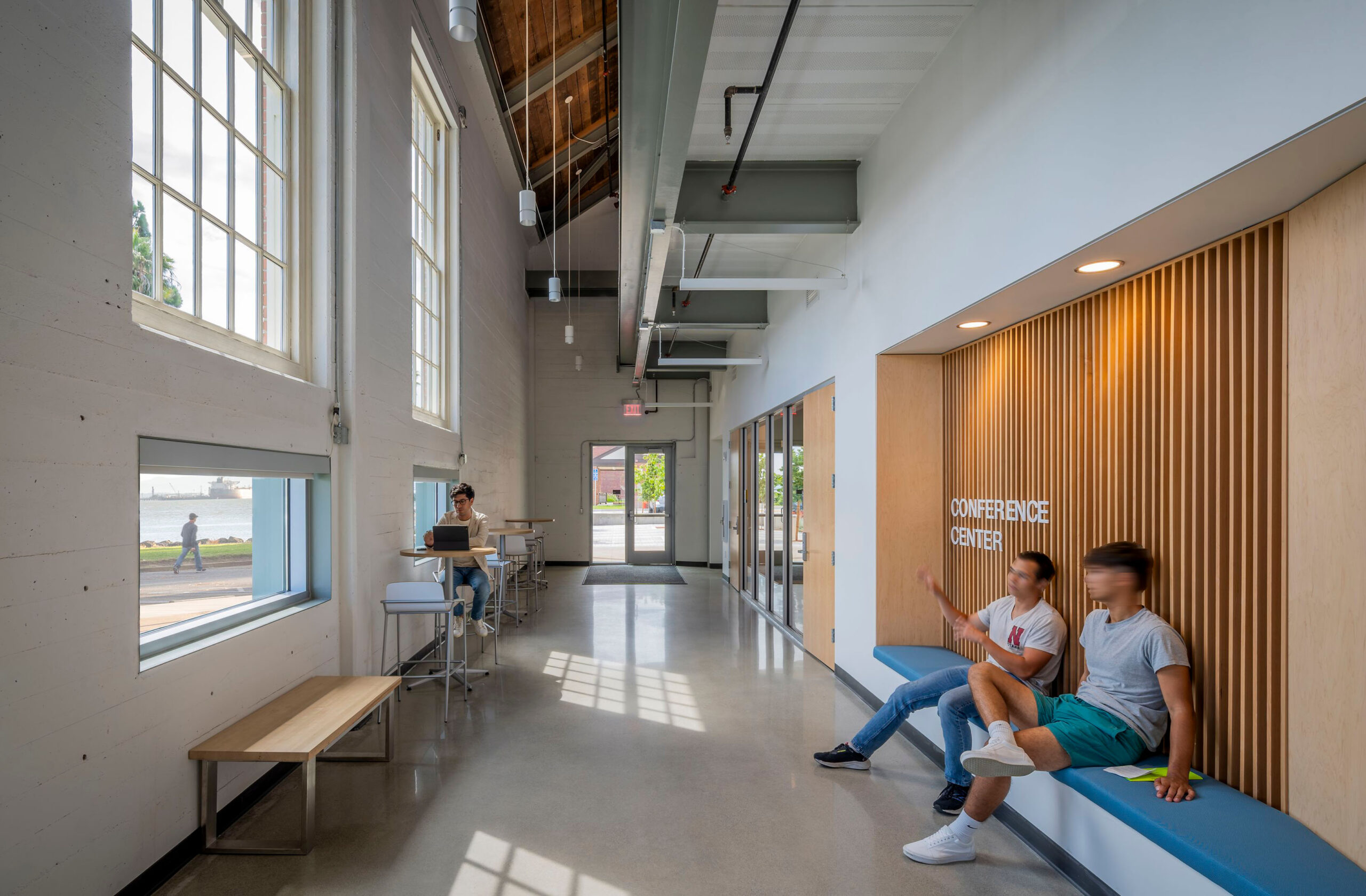
Doing more with less
Performance modeling revealed that the existing concrete and brick walls provided sufficient thermal mass, eliminating the need for additional insulation while achieving energy and waste reduction goals. Approximately 80% of interior finishes retain the original concrete and wood structure. The existing exposed wood deck was preserved, with structurally insulated panels added to the gabled roof for structural integrity and thermal performance. 87% of construction and demolition waste was diverted from landfills.
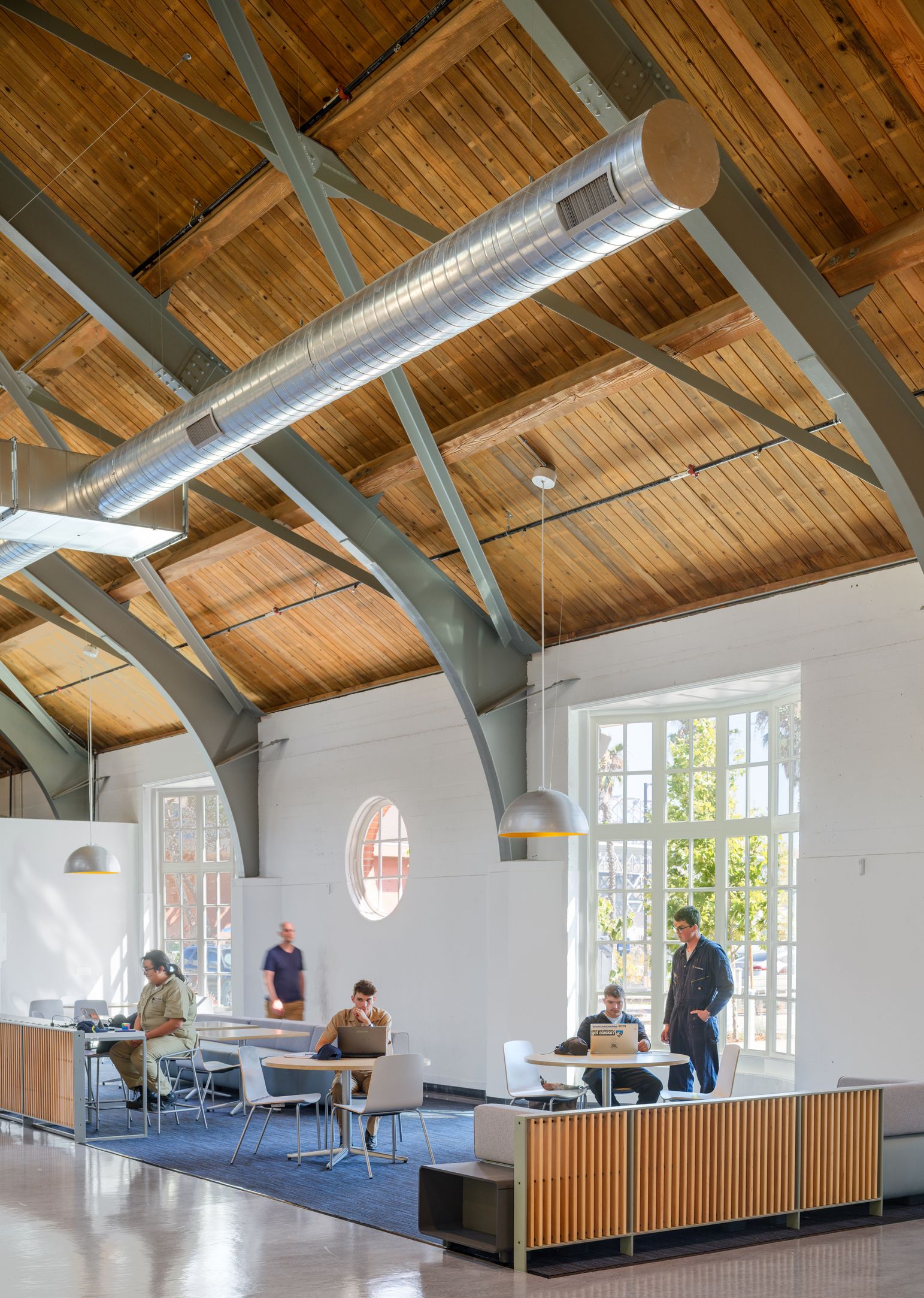
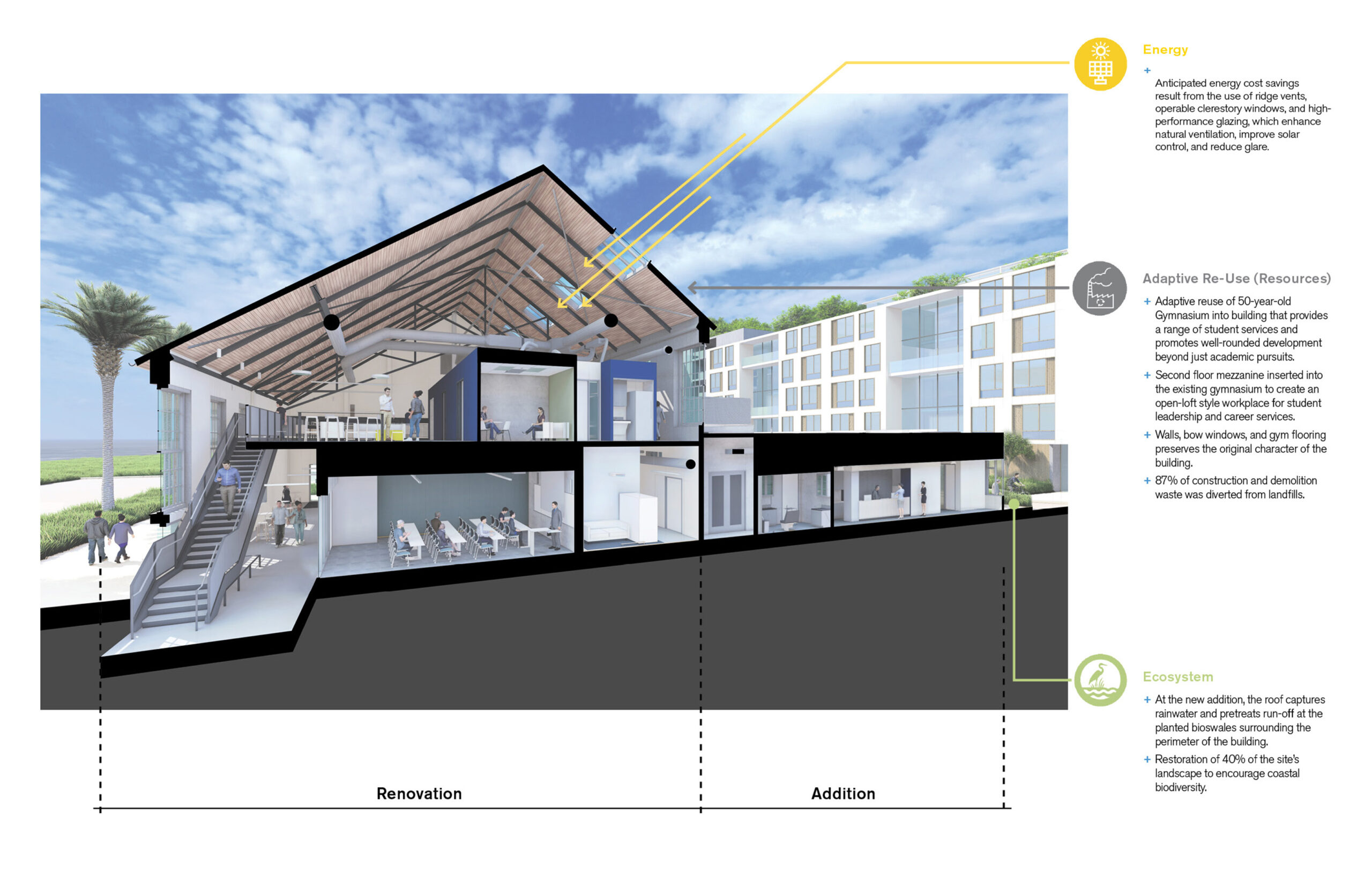
Collaborative Design-Build in action
Mayo Hall was delivered using Collaborative Design-Build, an integrated process in which WRNS Studio worked seamlessly with our builder partner, Otto Construction, to achieve a functional and cost-effective campus asset.

“WRNS Studio has always been one of my favorite design firms to work with—they take the time to understand CMA’s needs and provide design solutions to meet those needs.”
